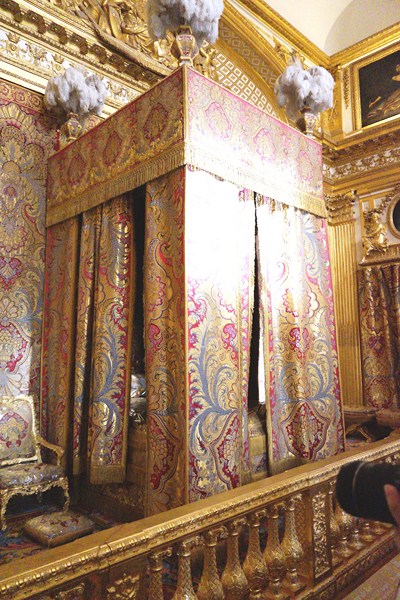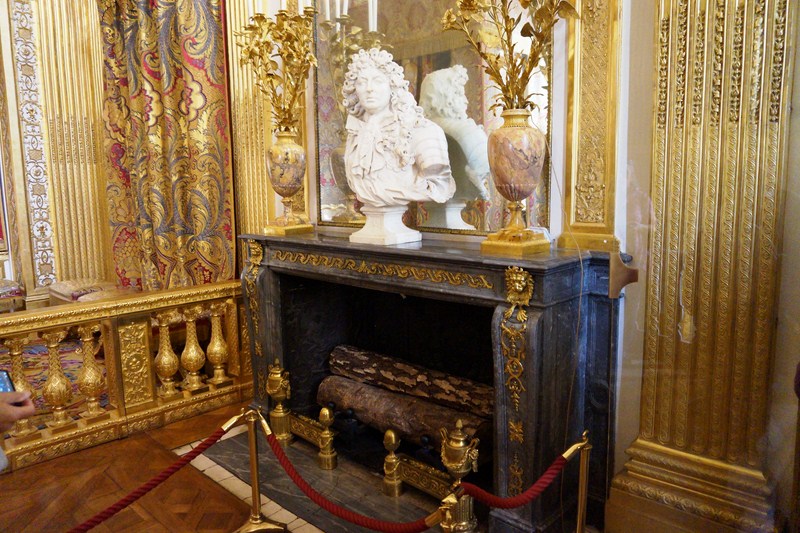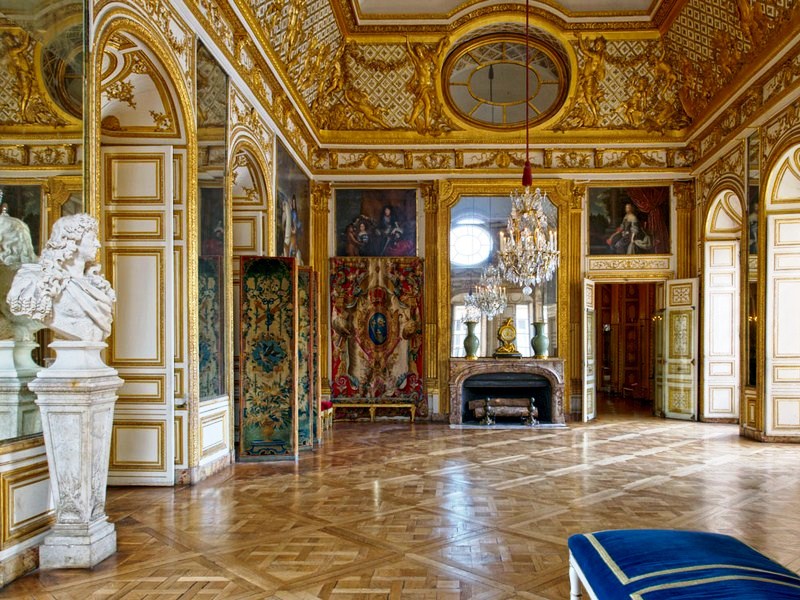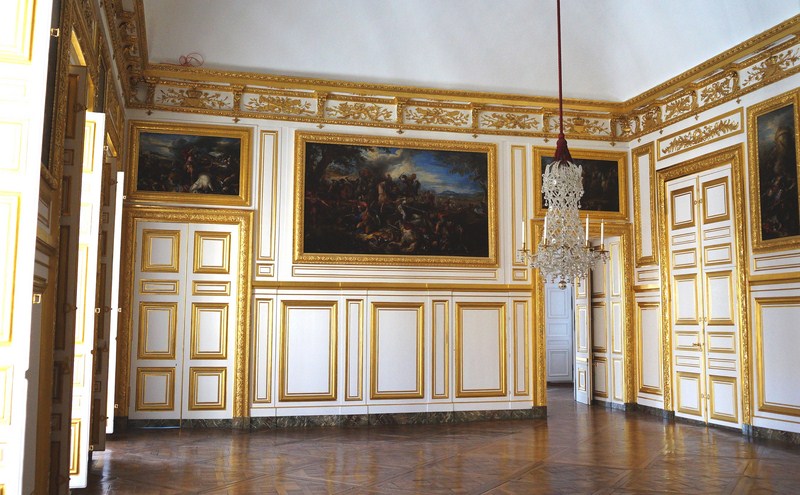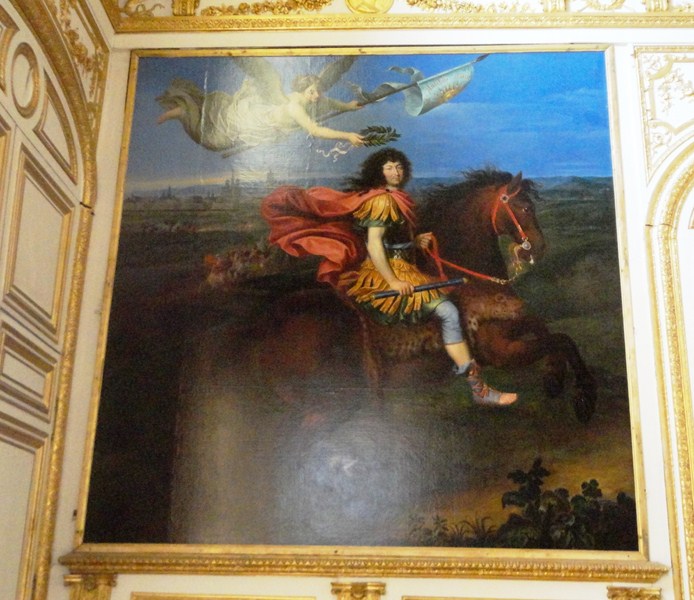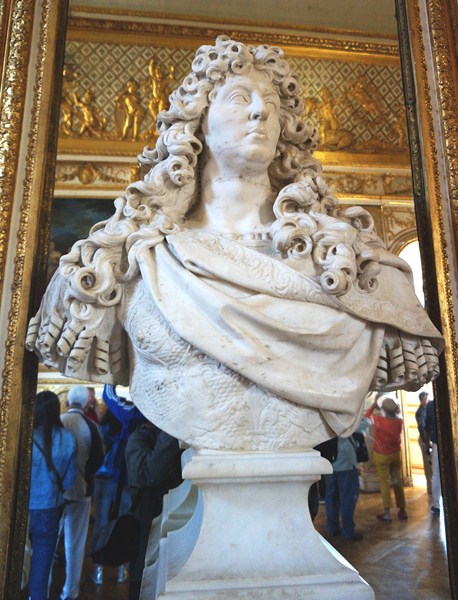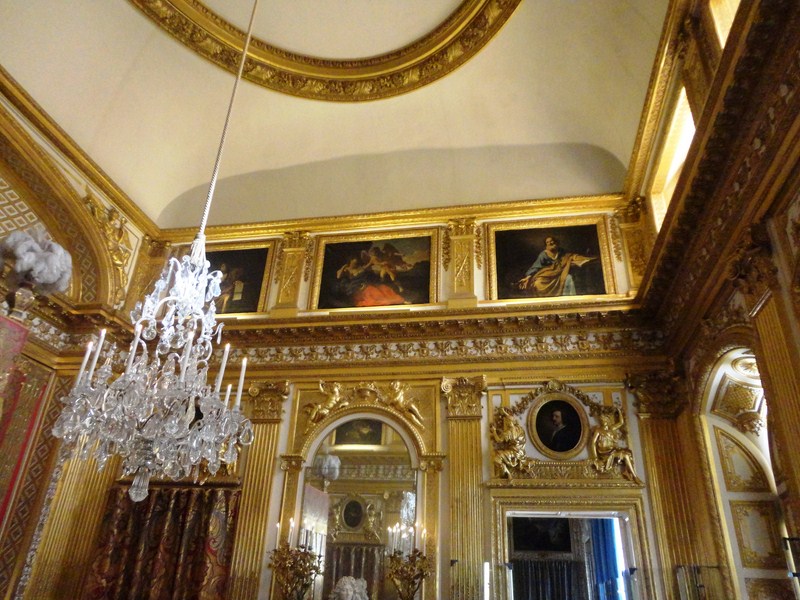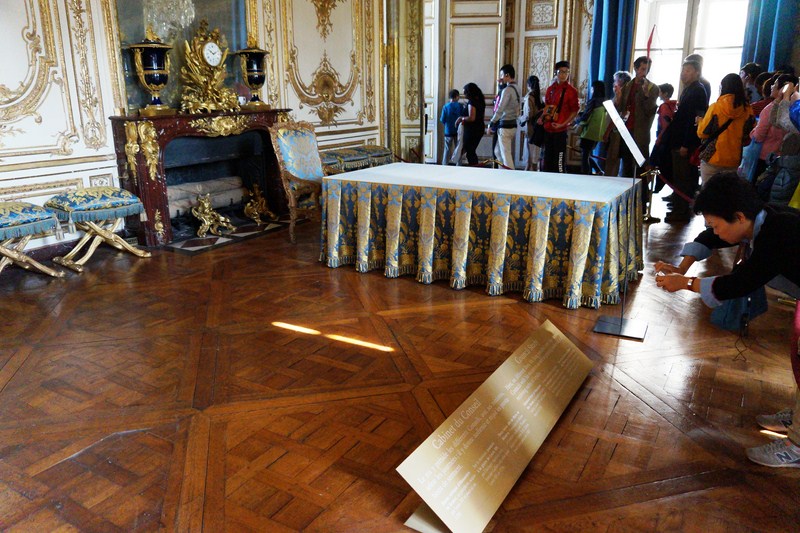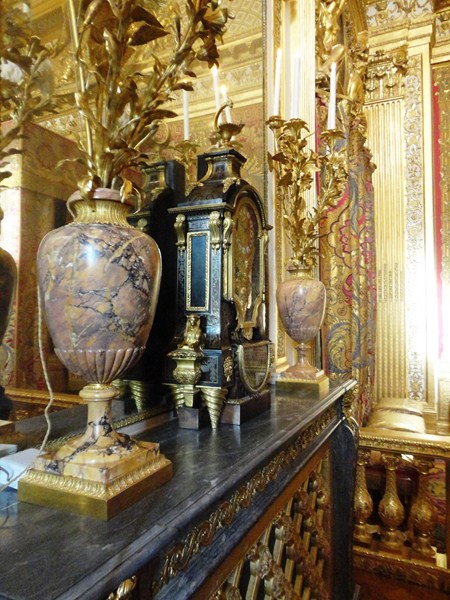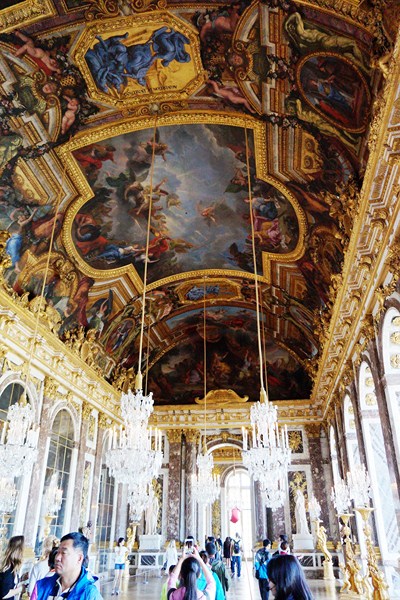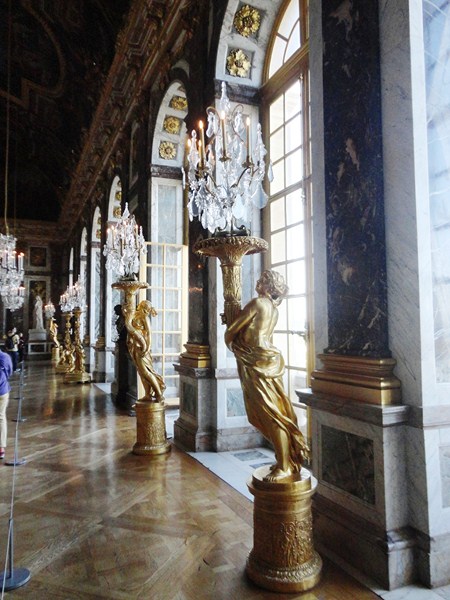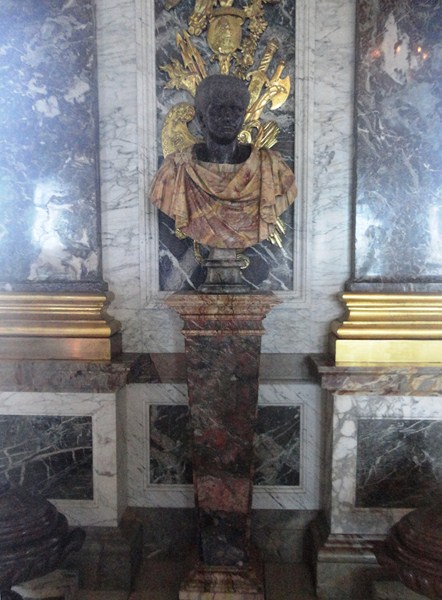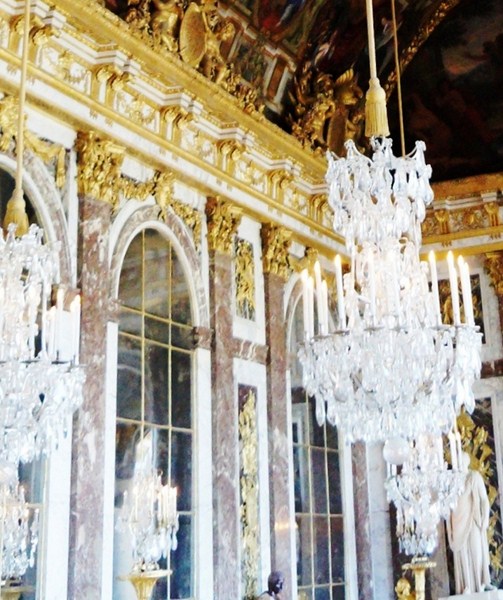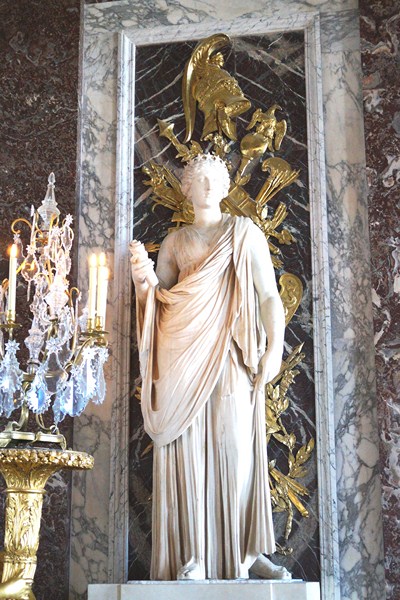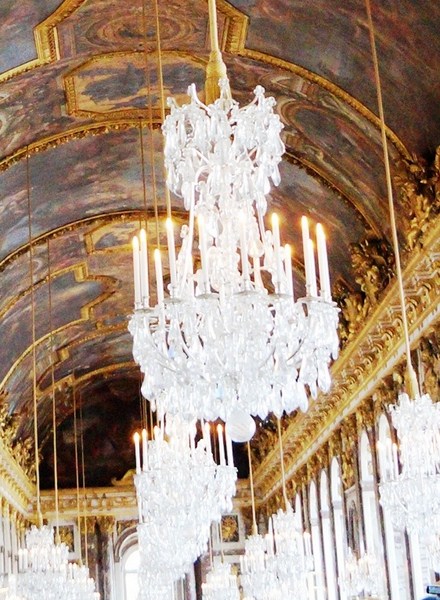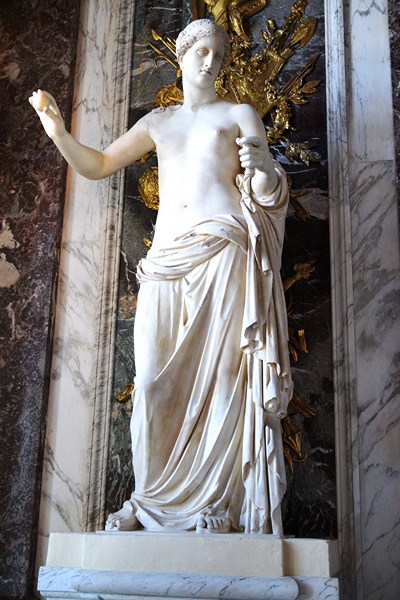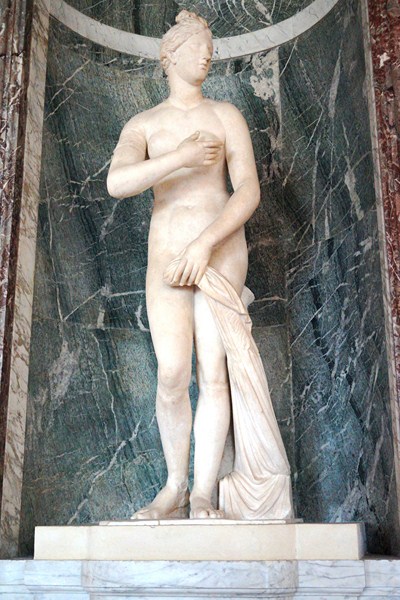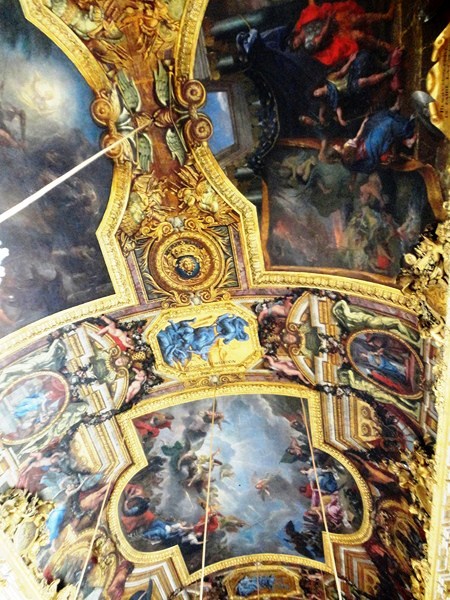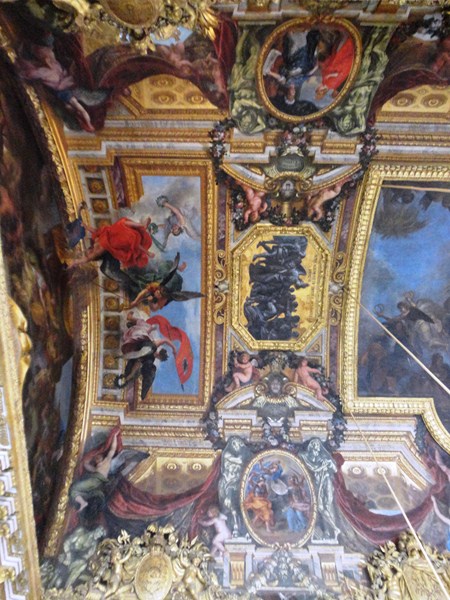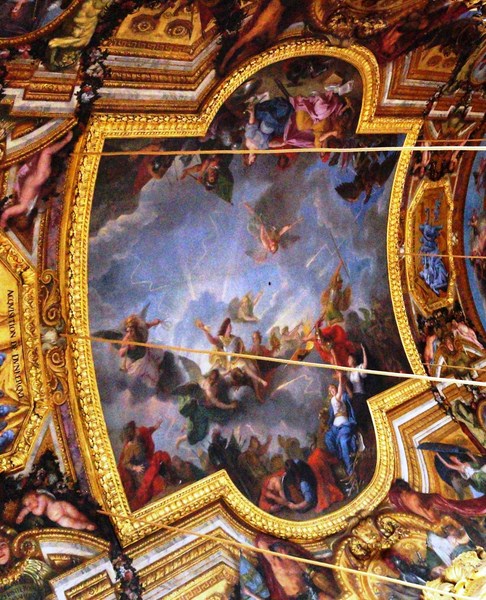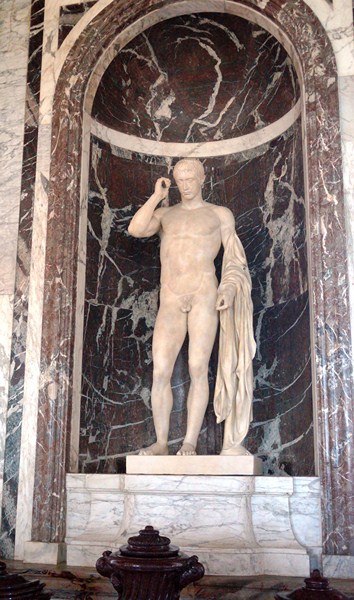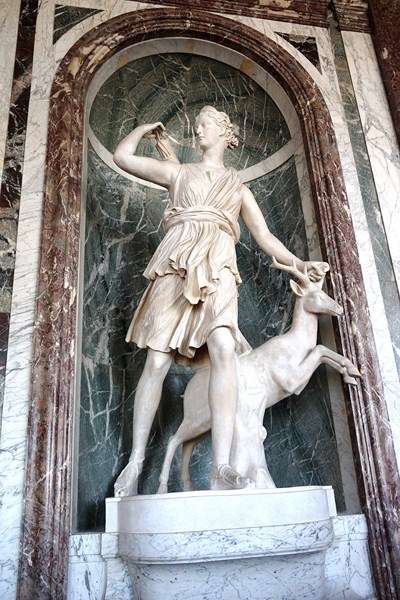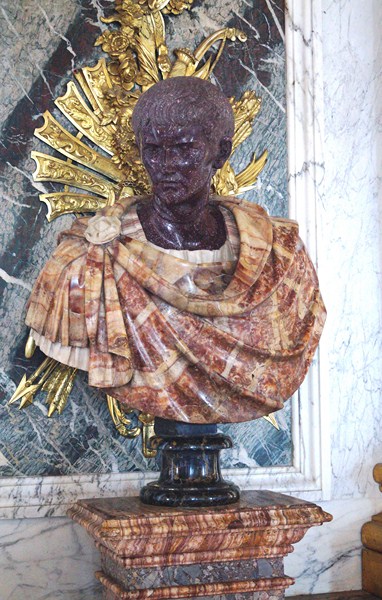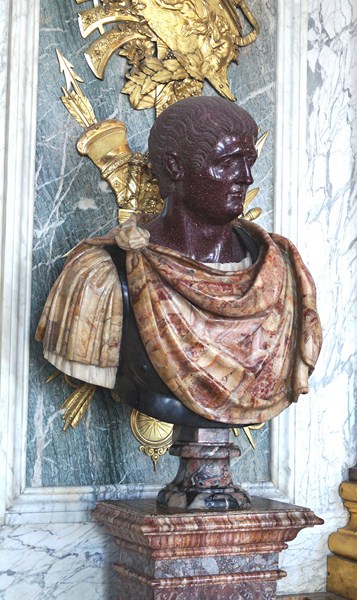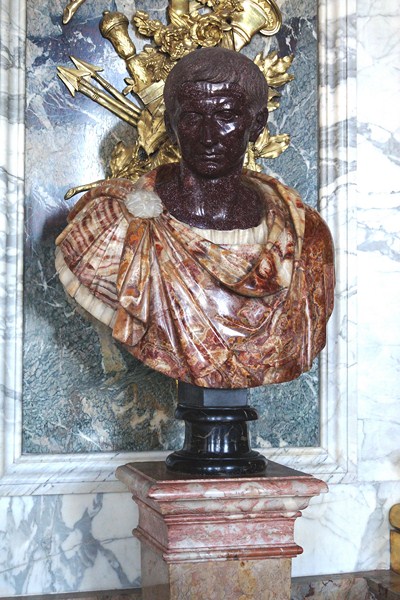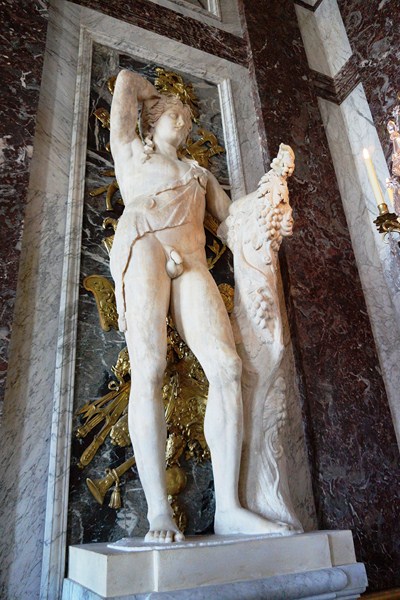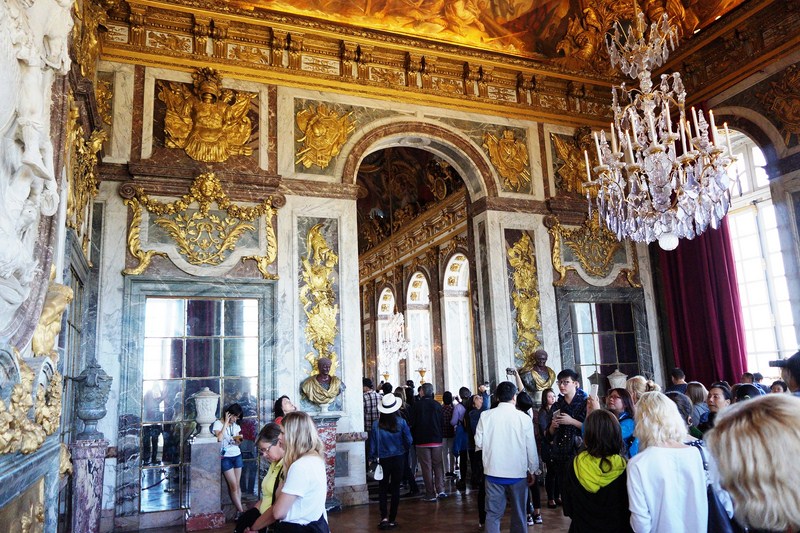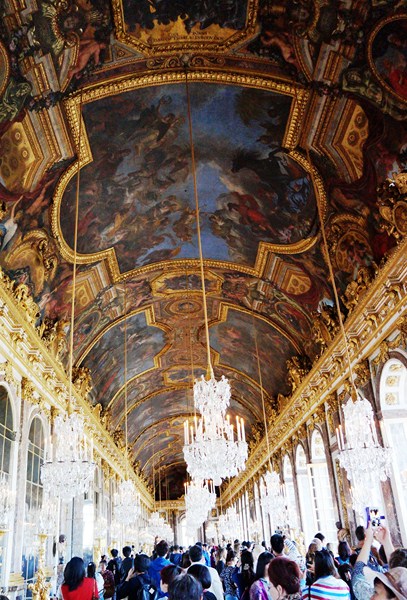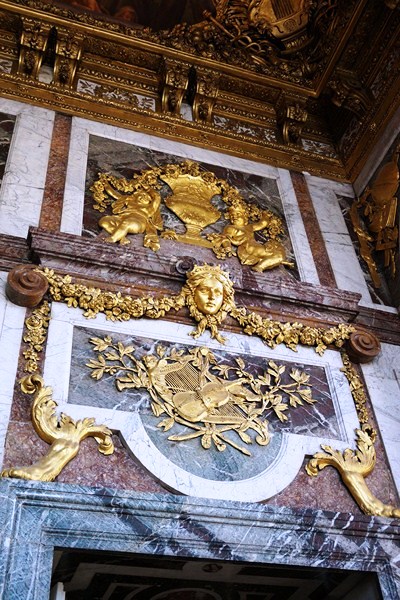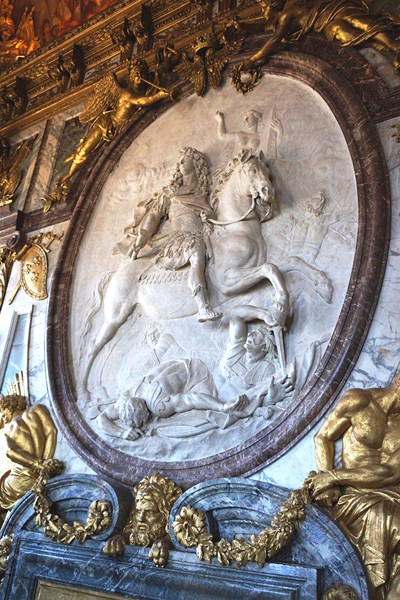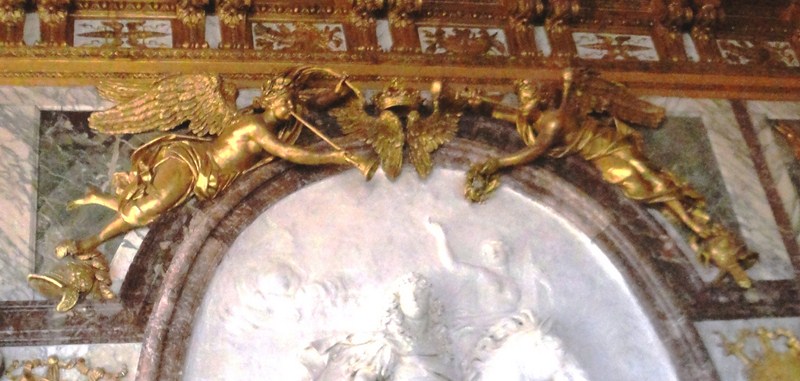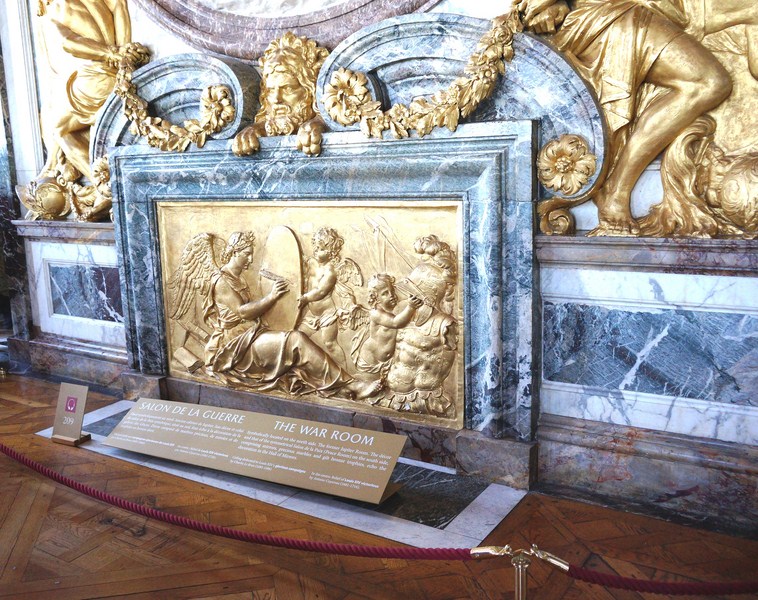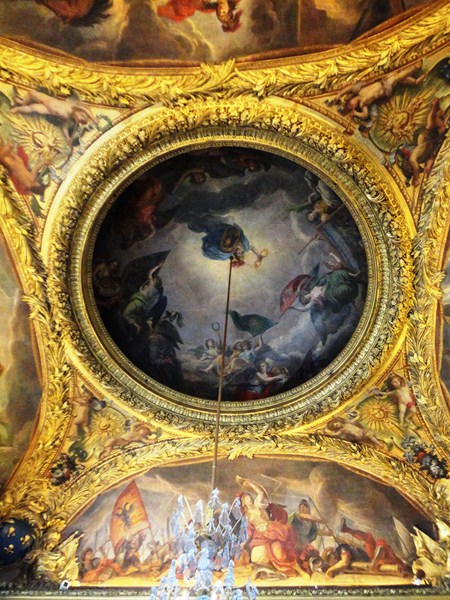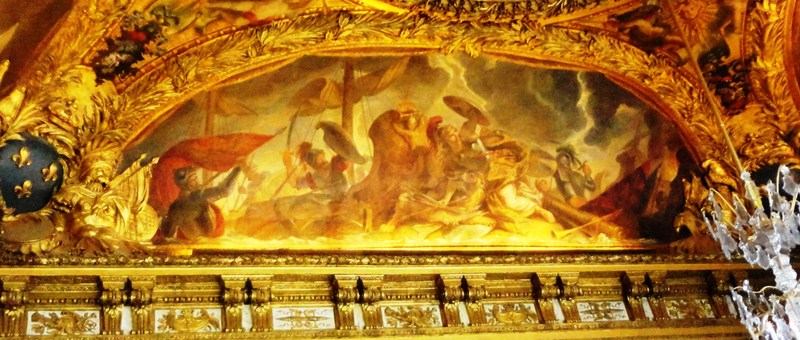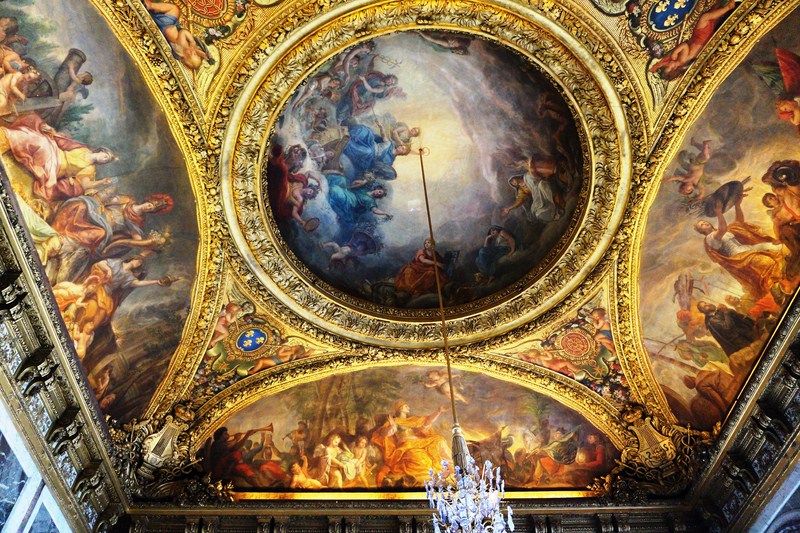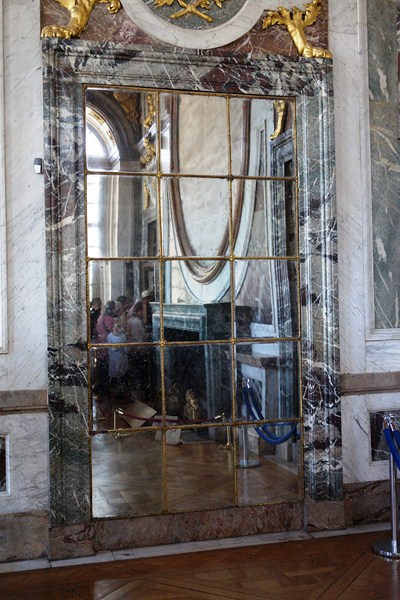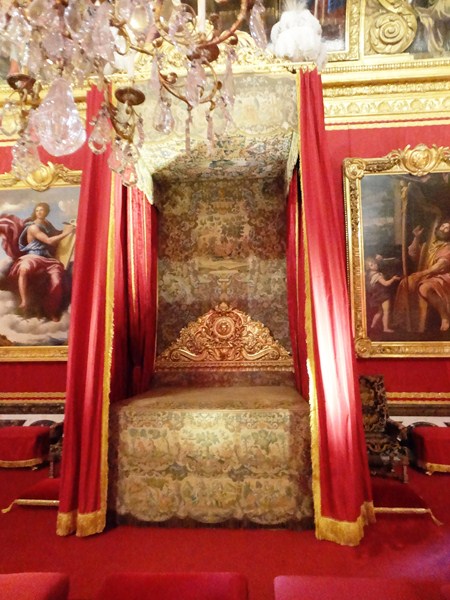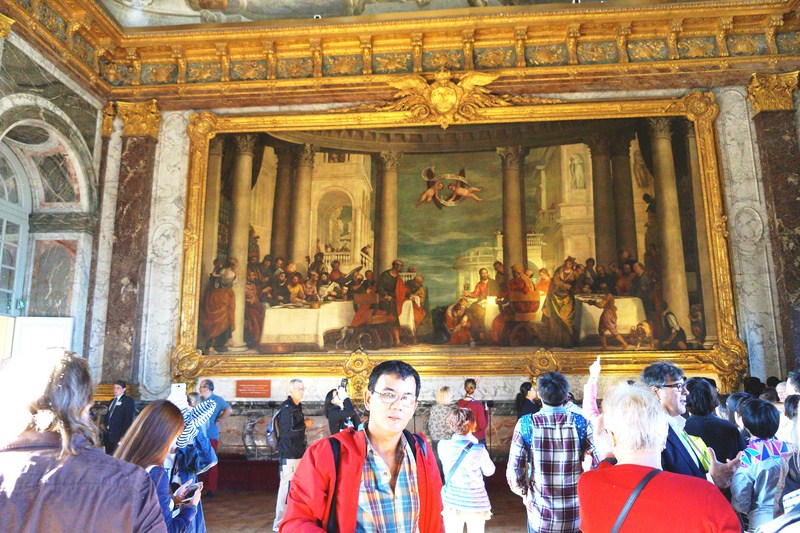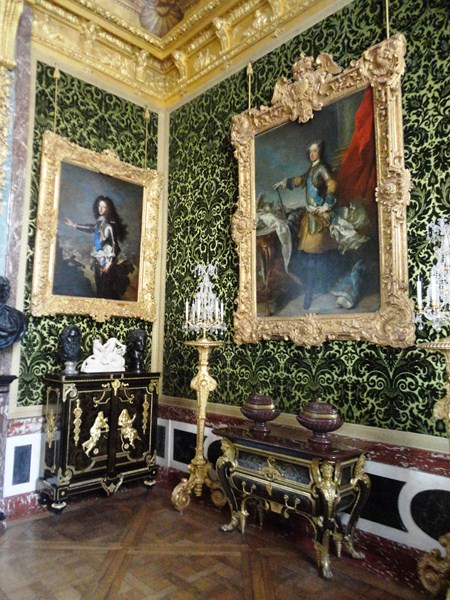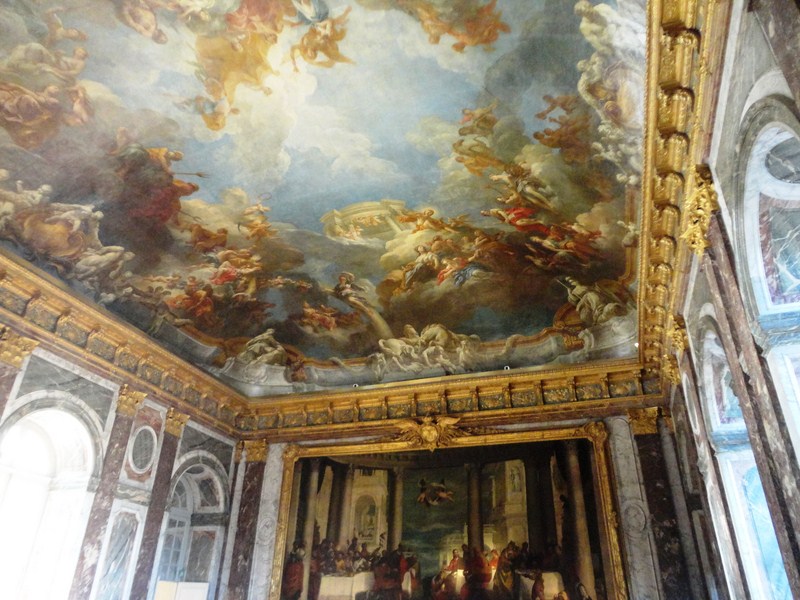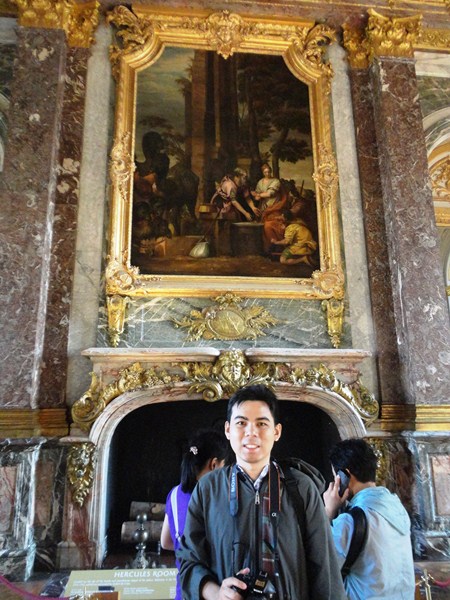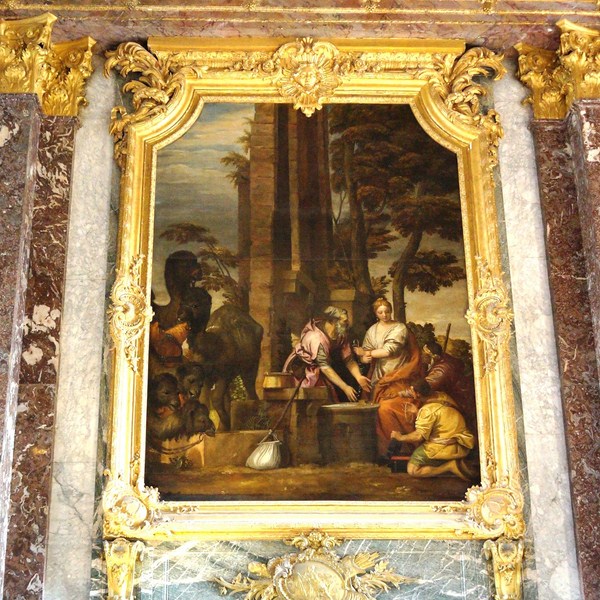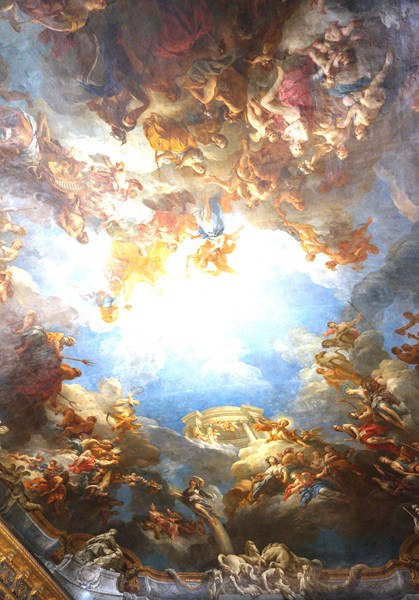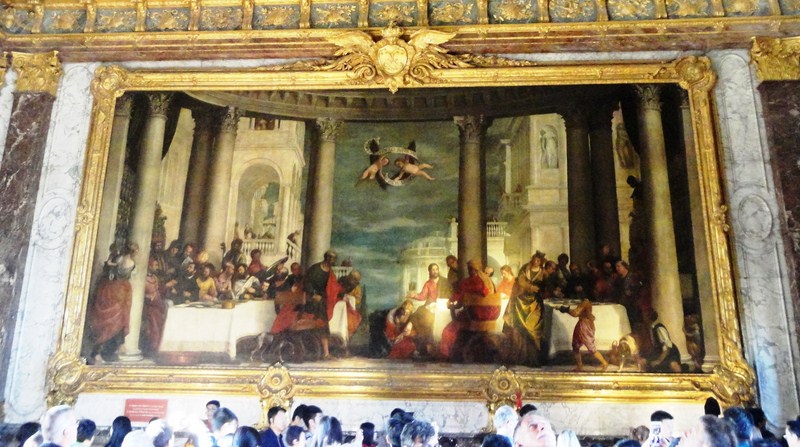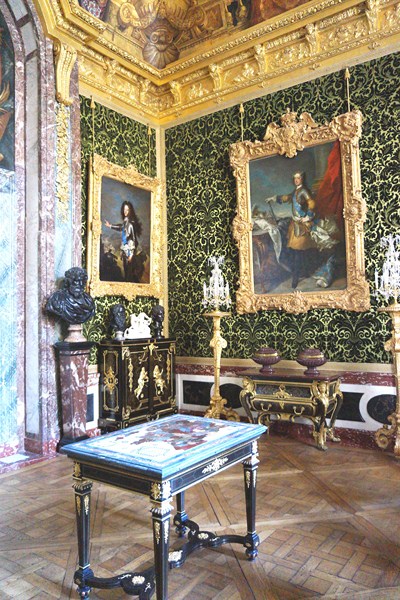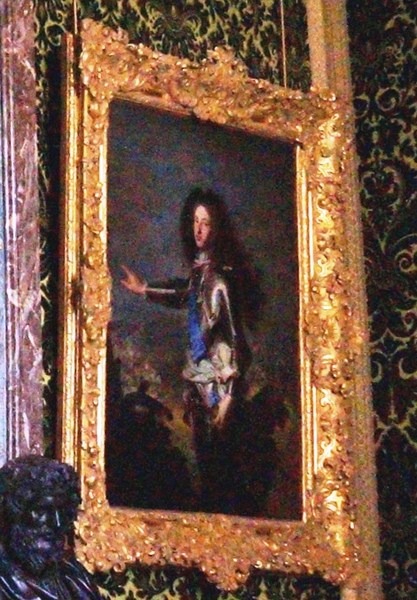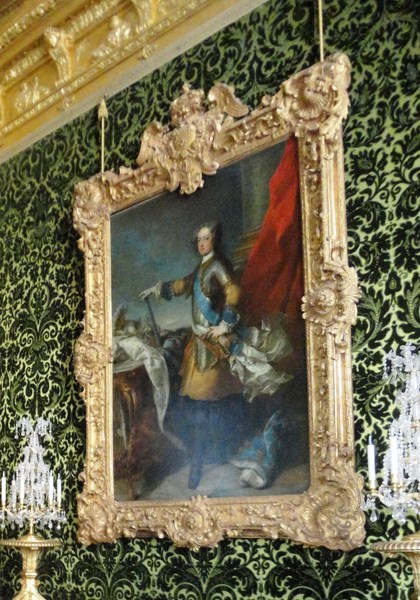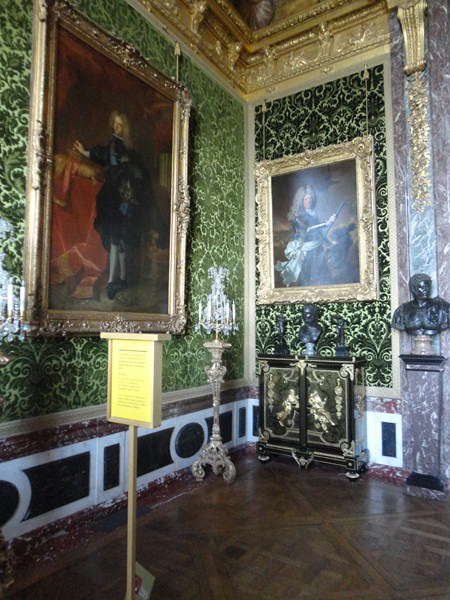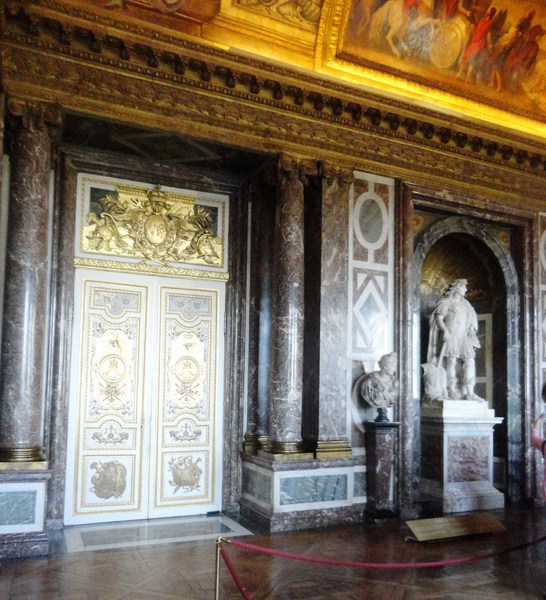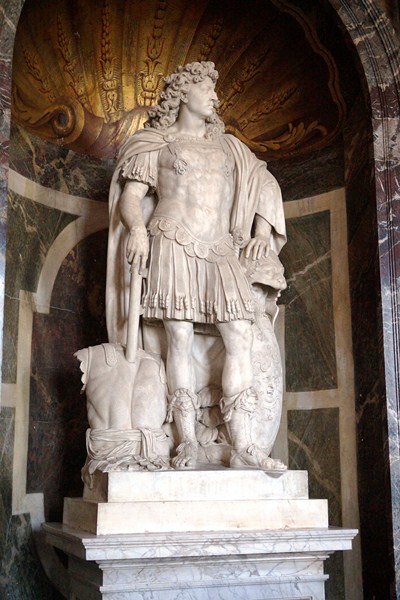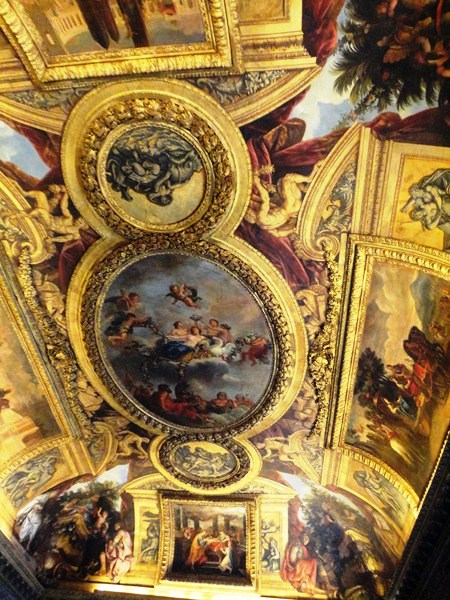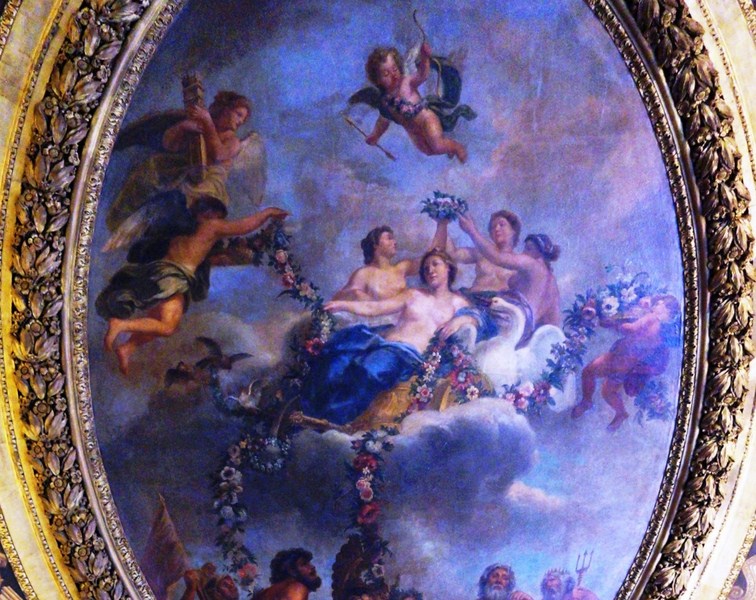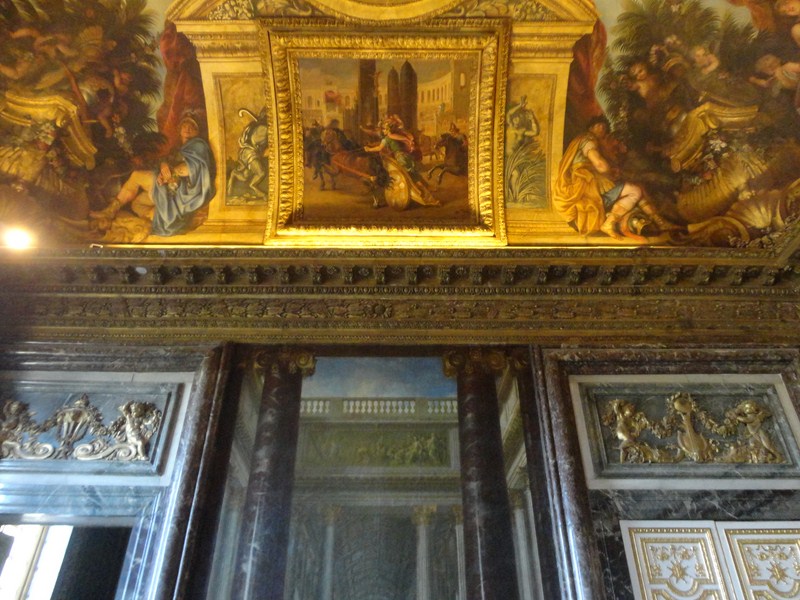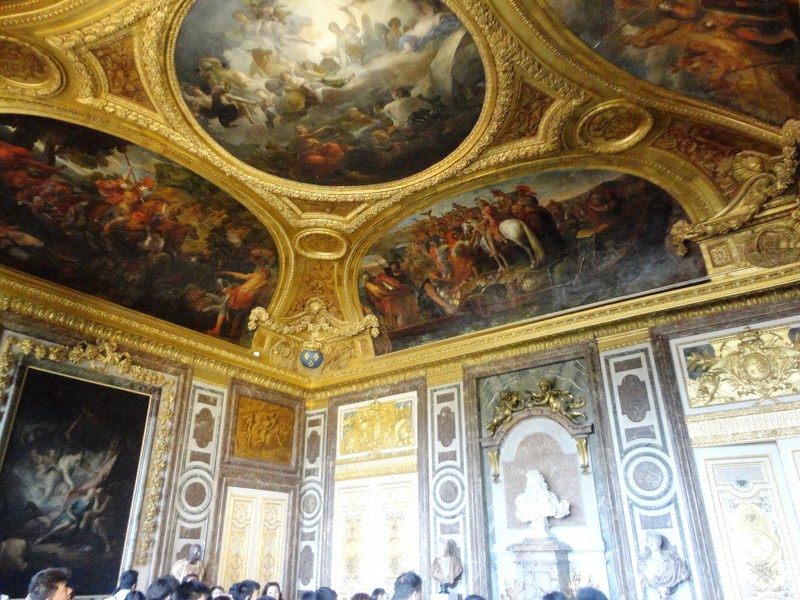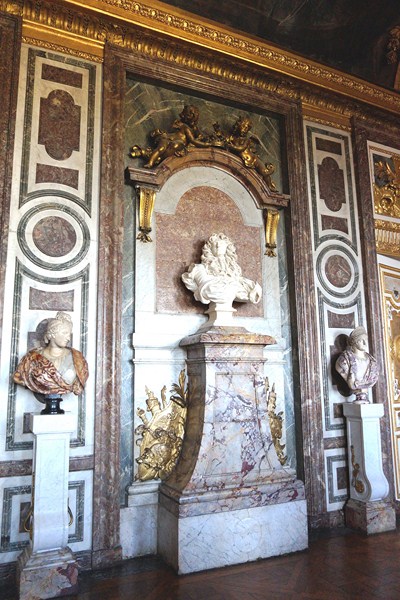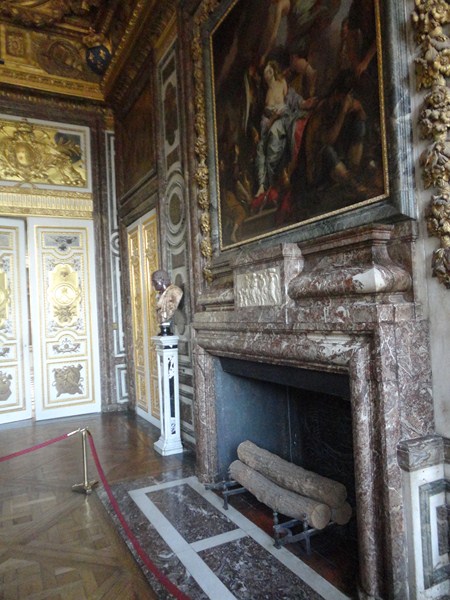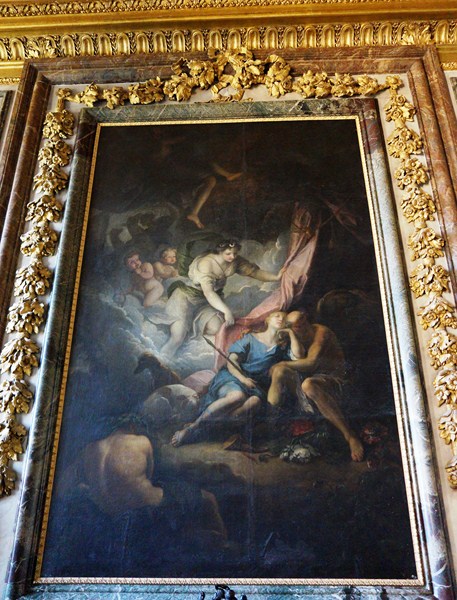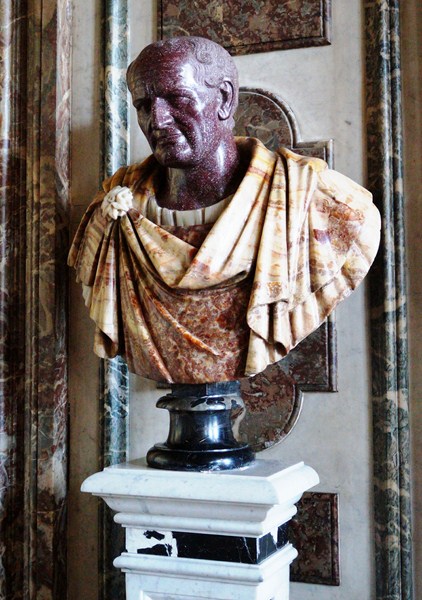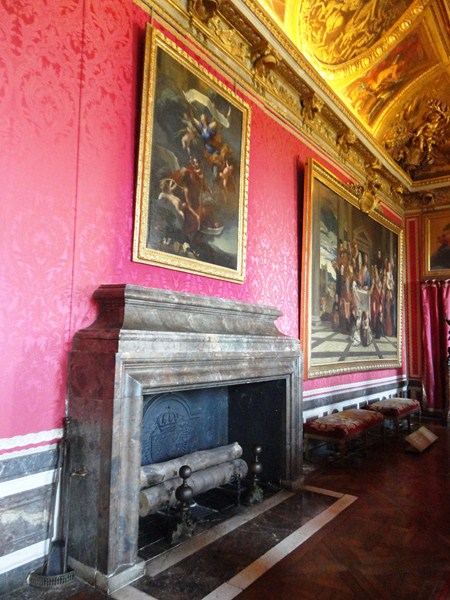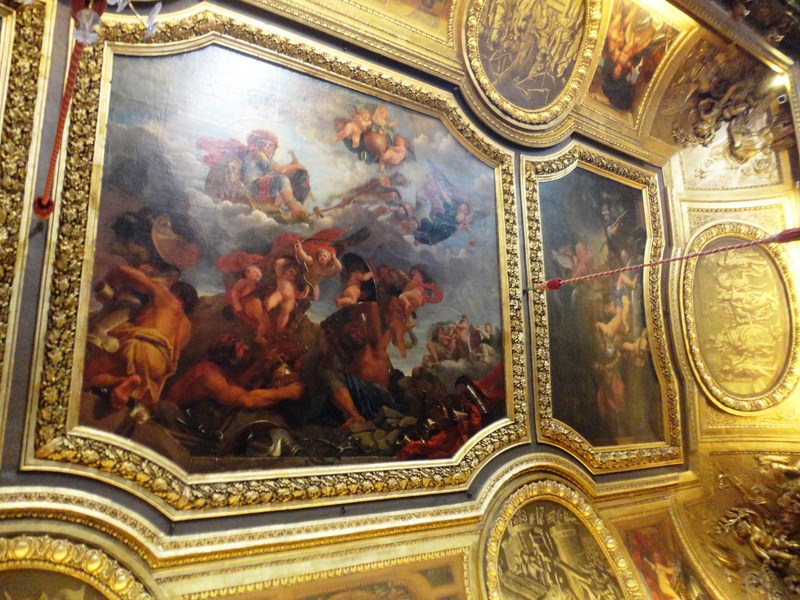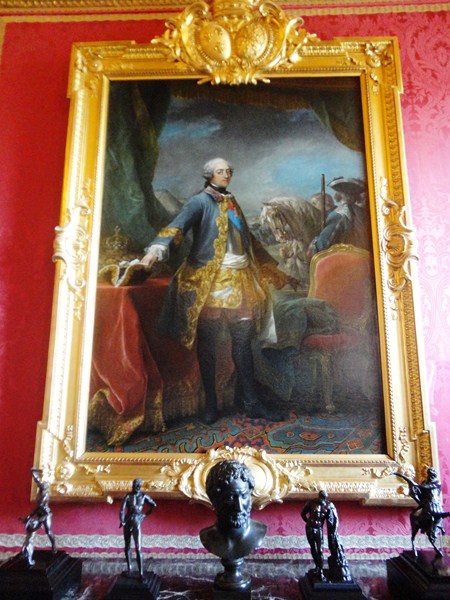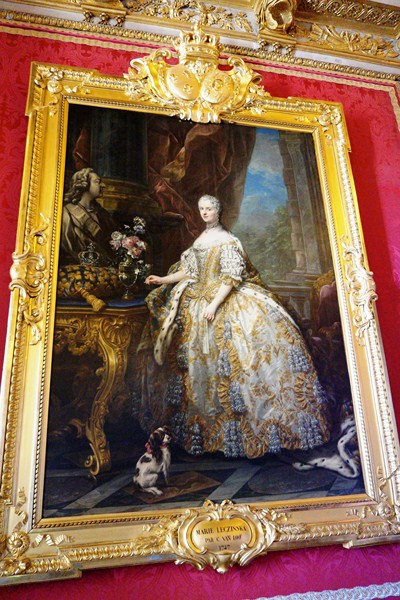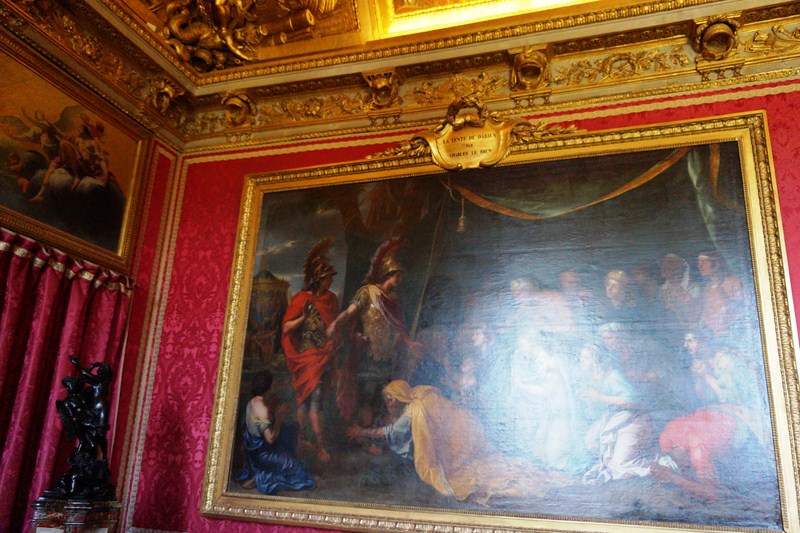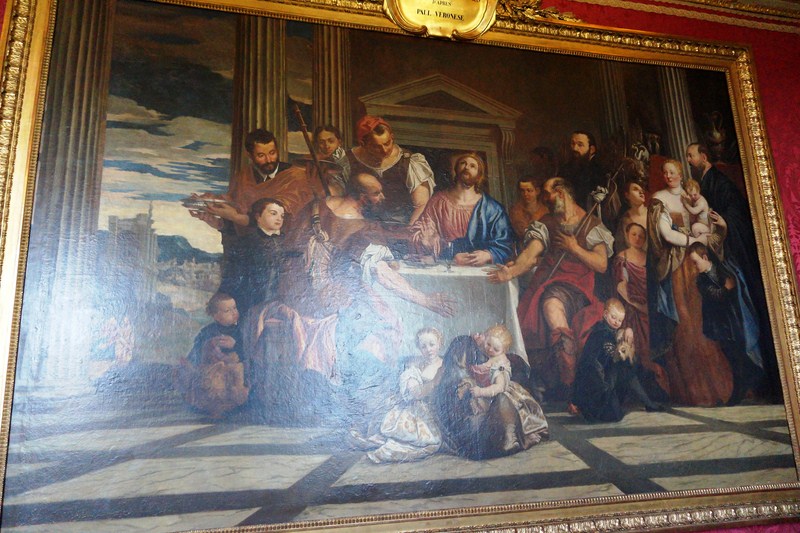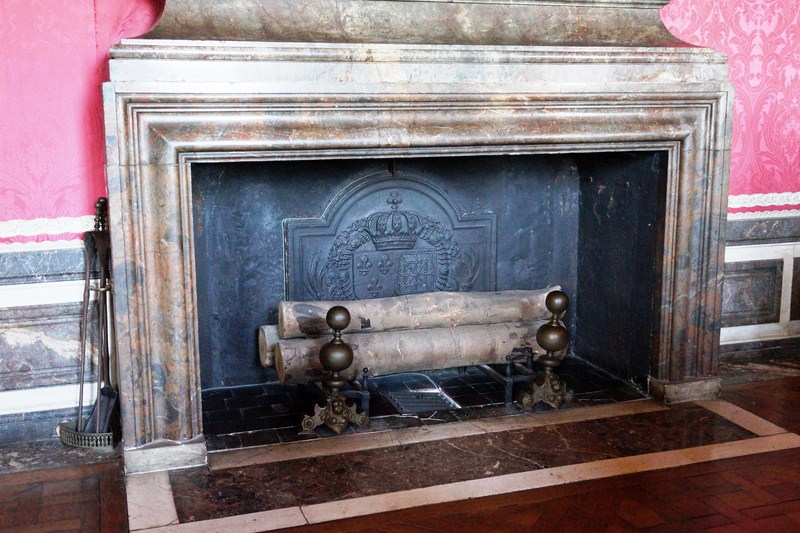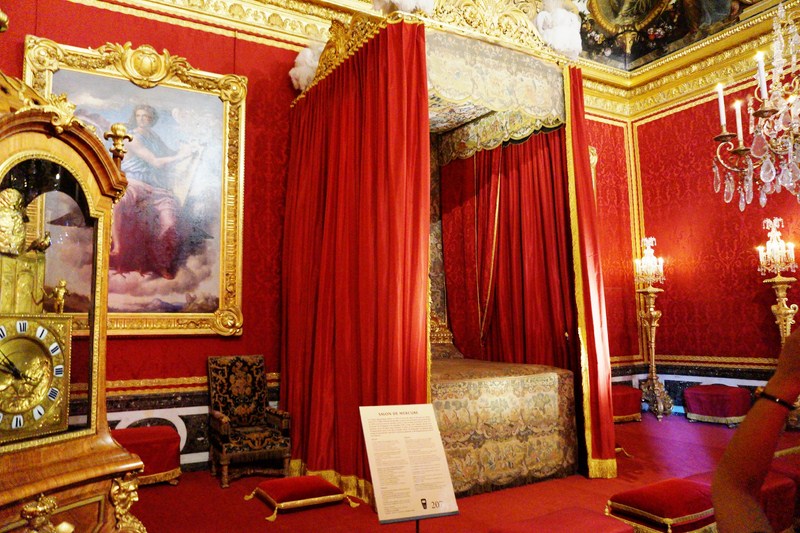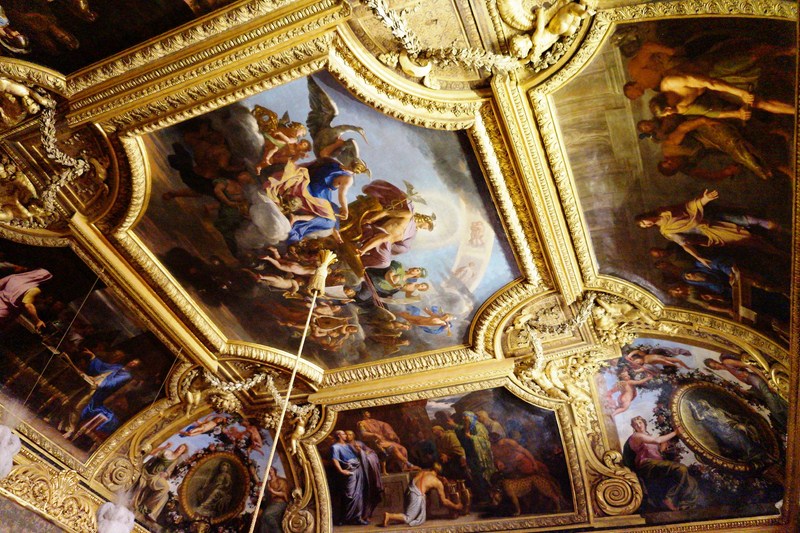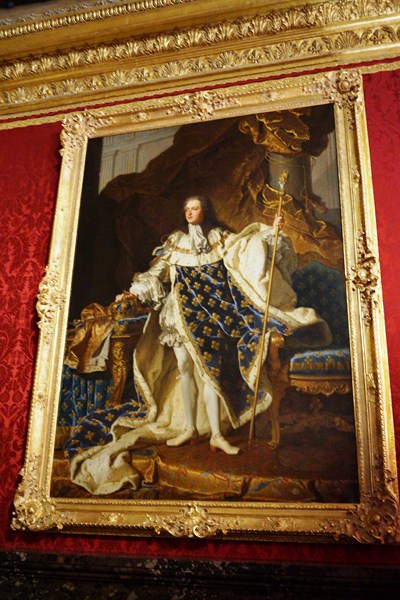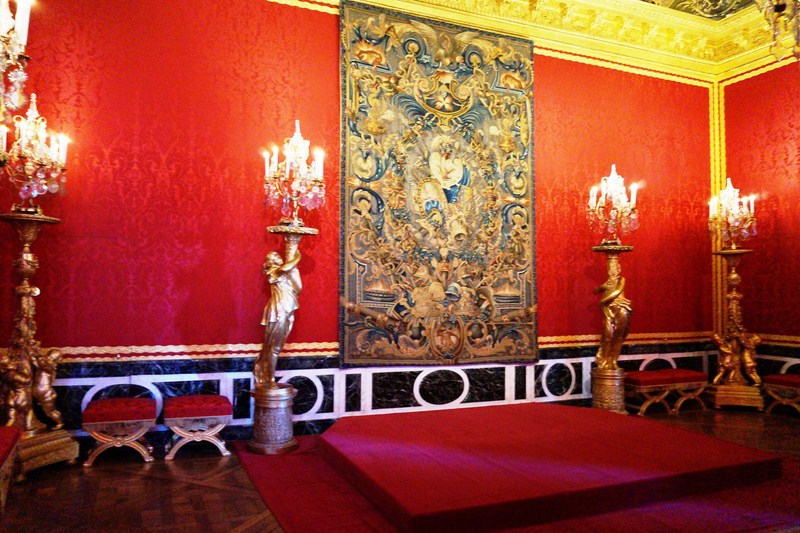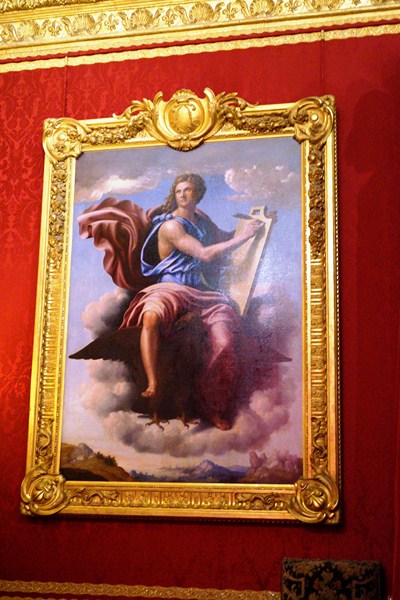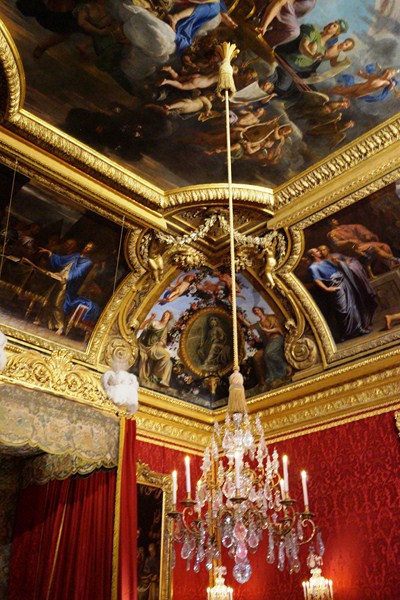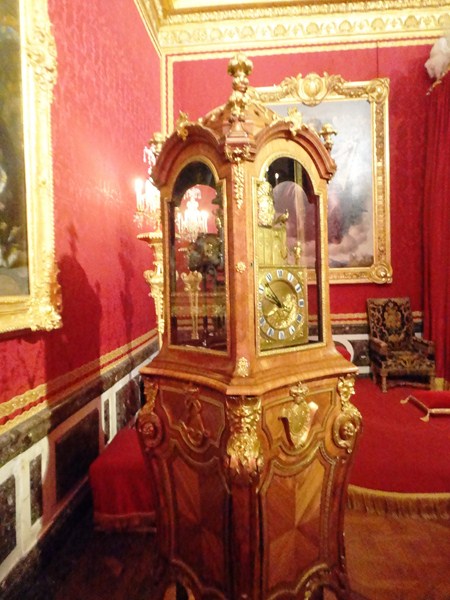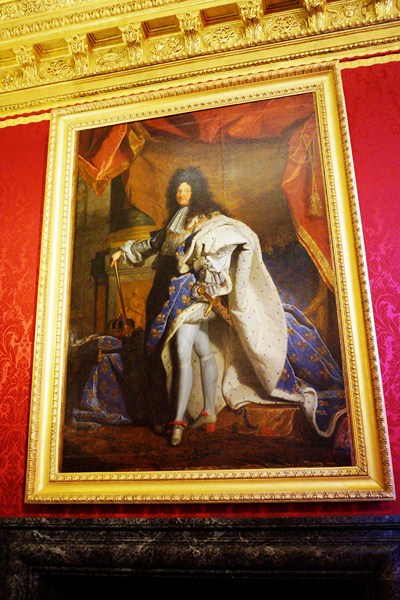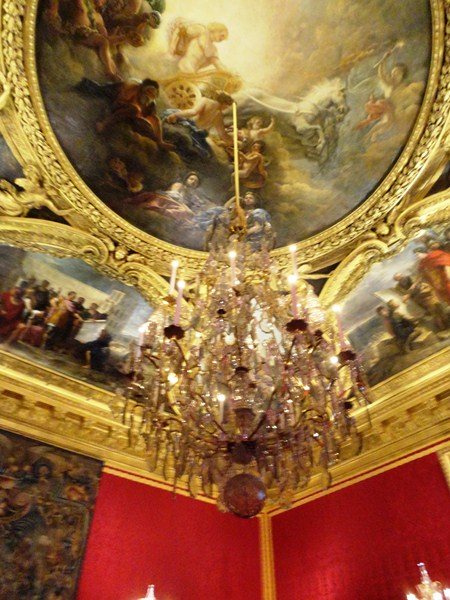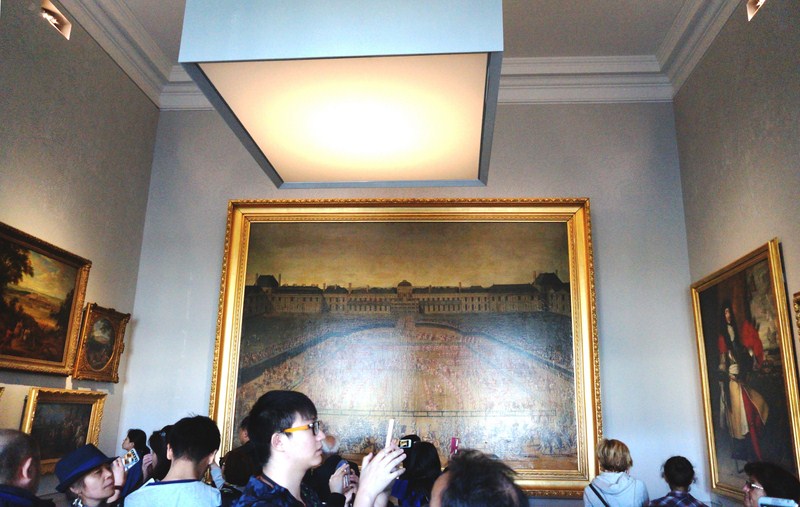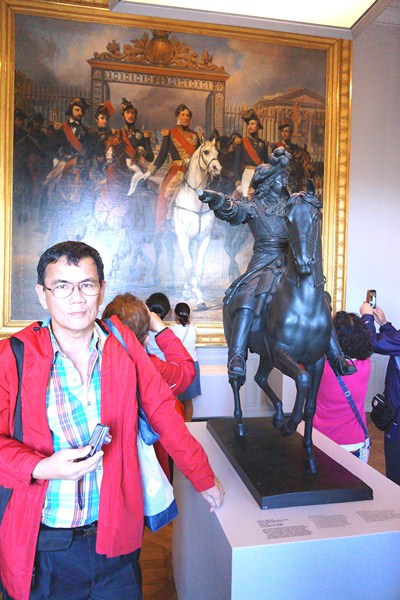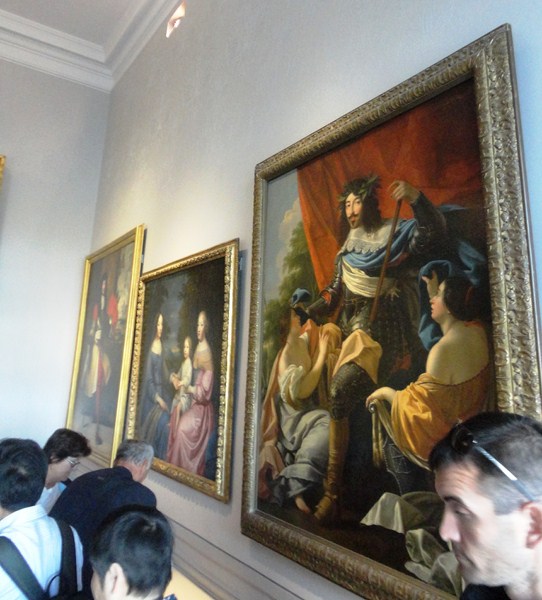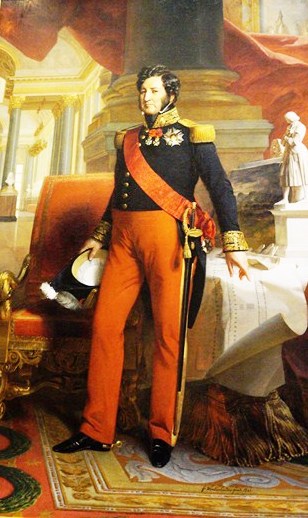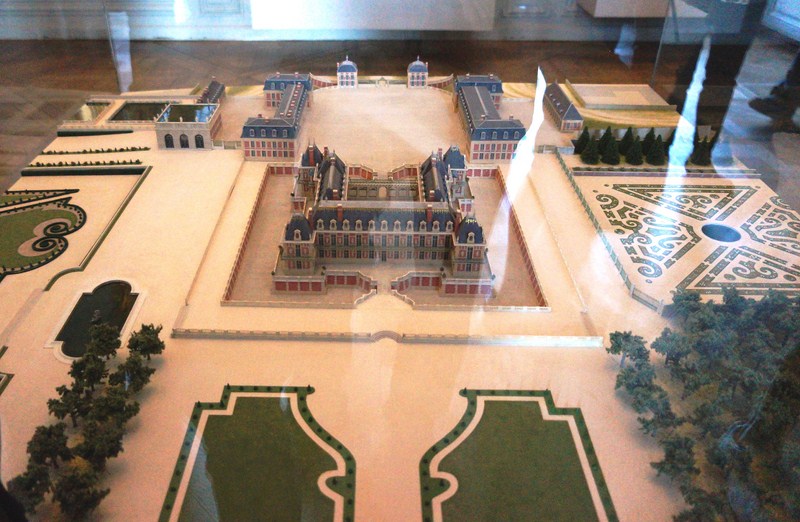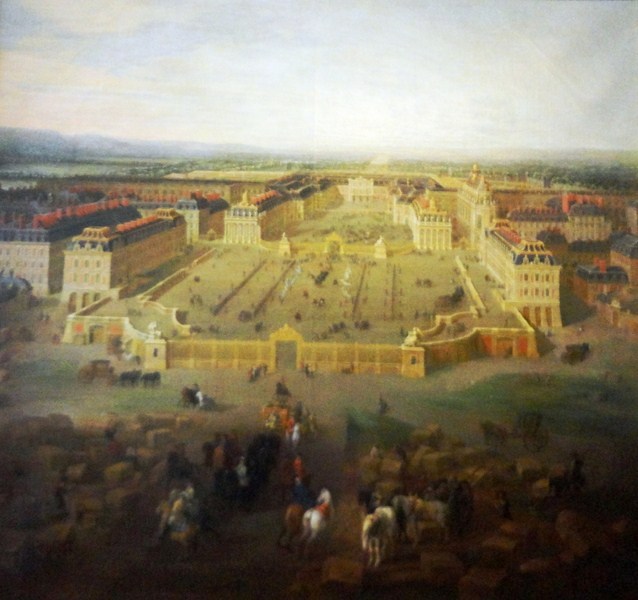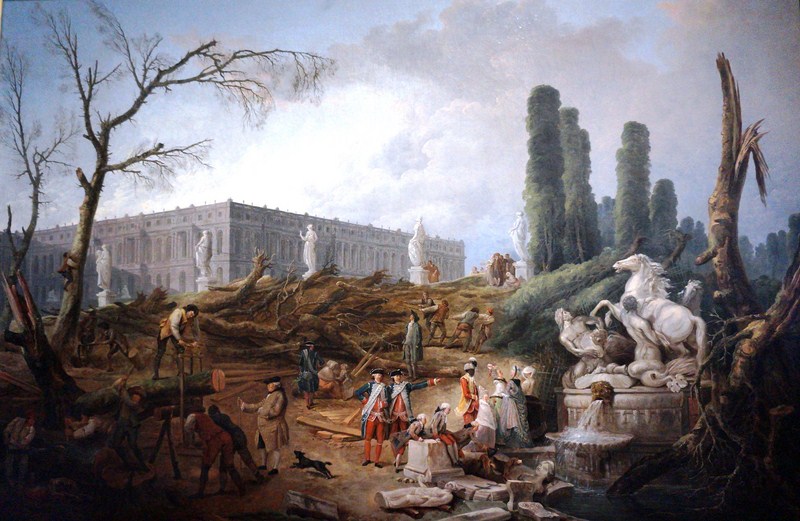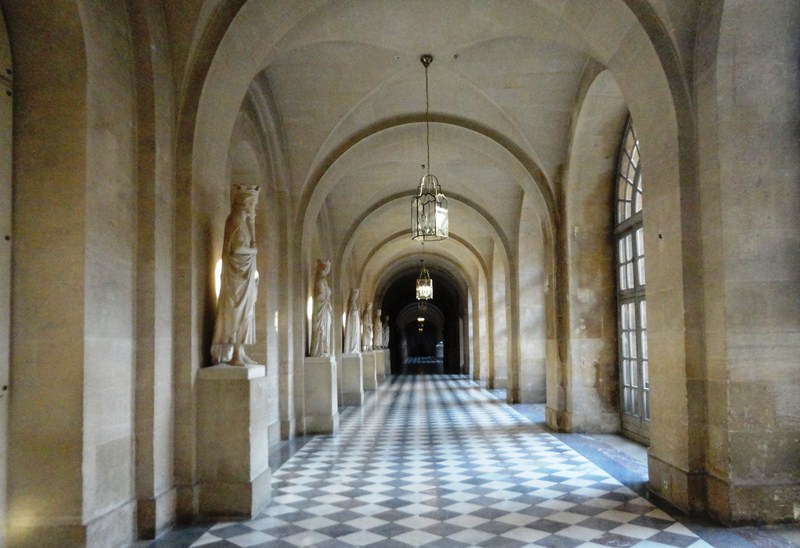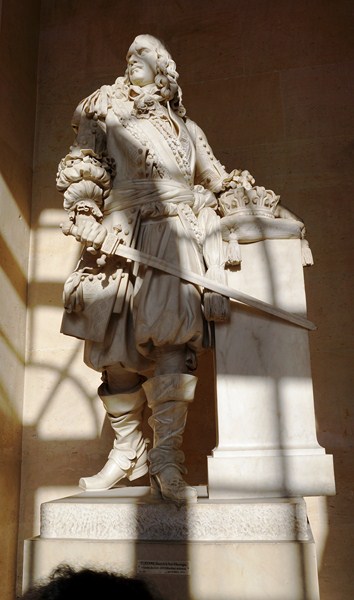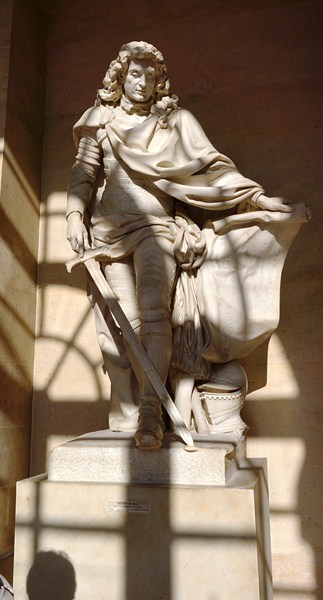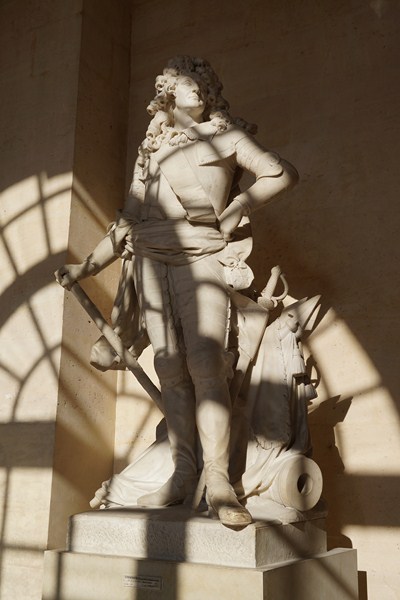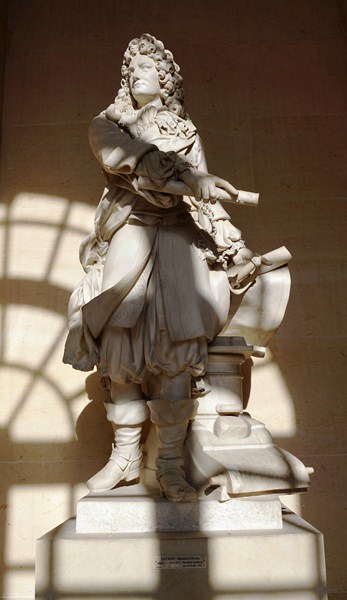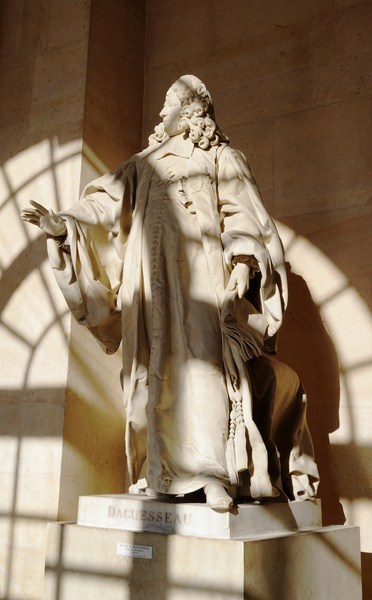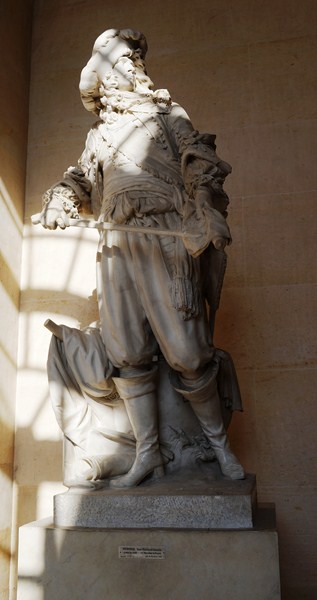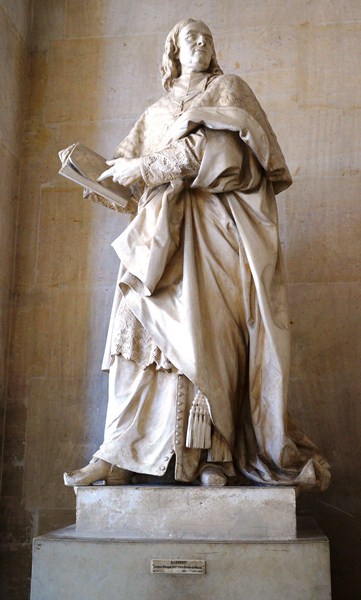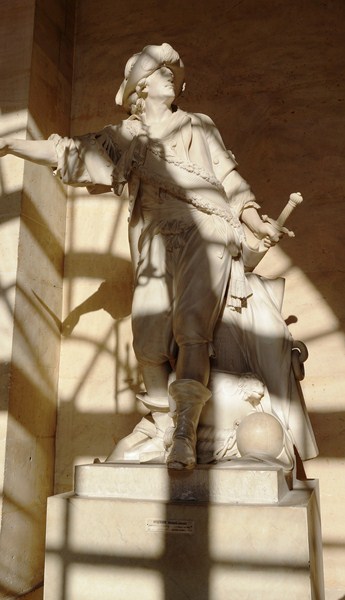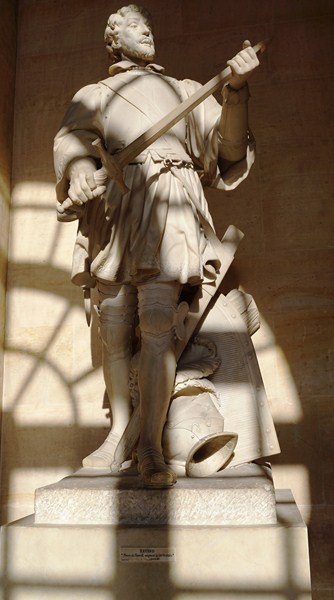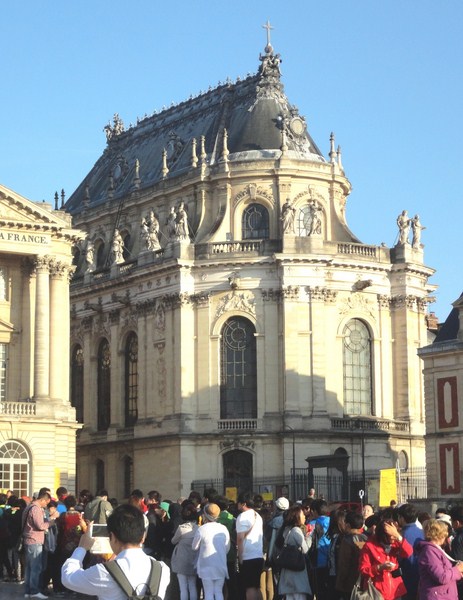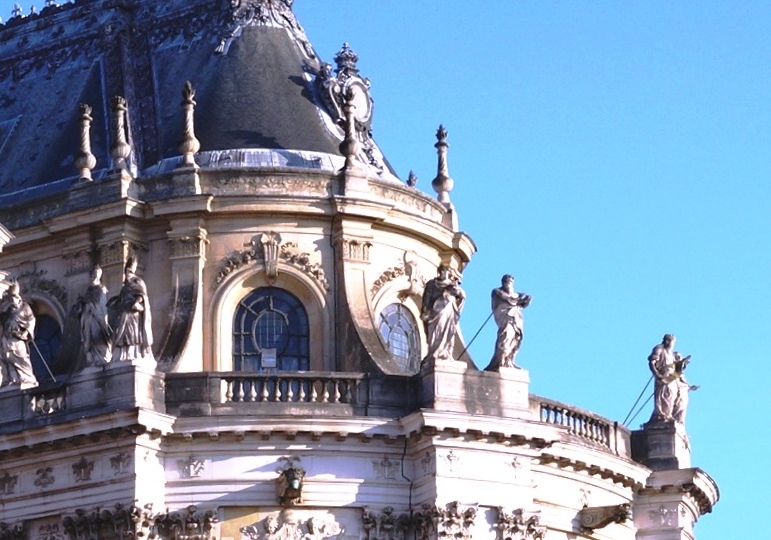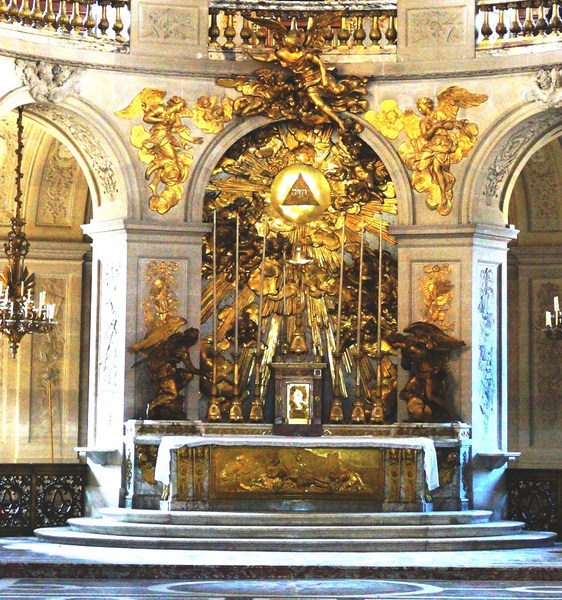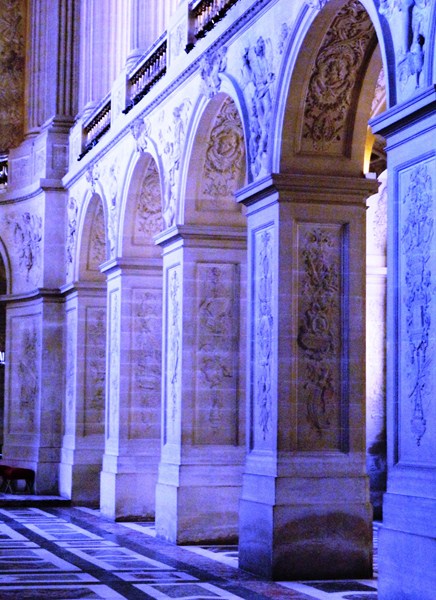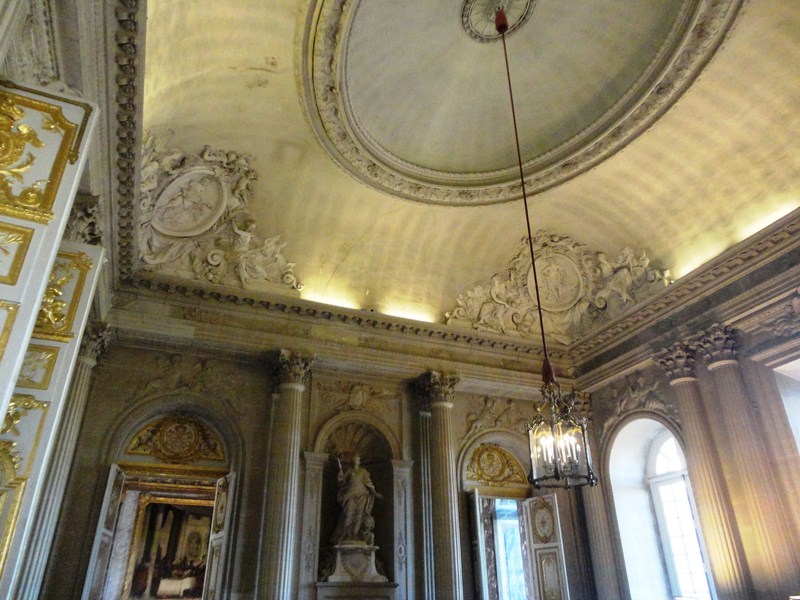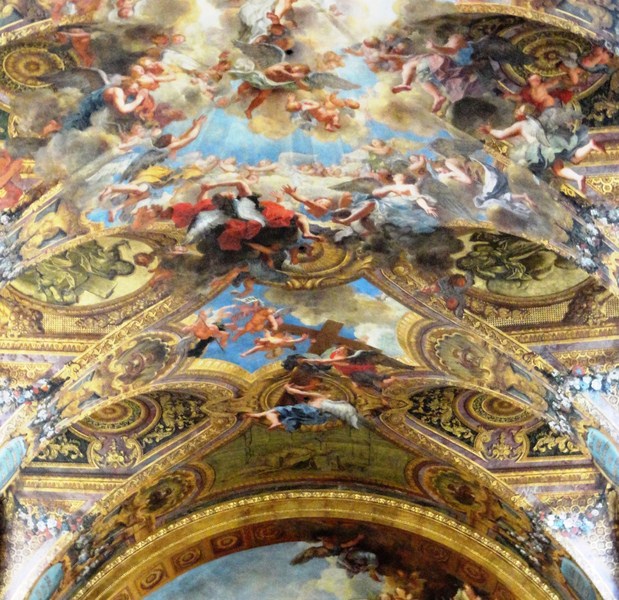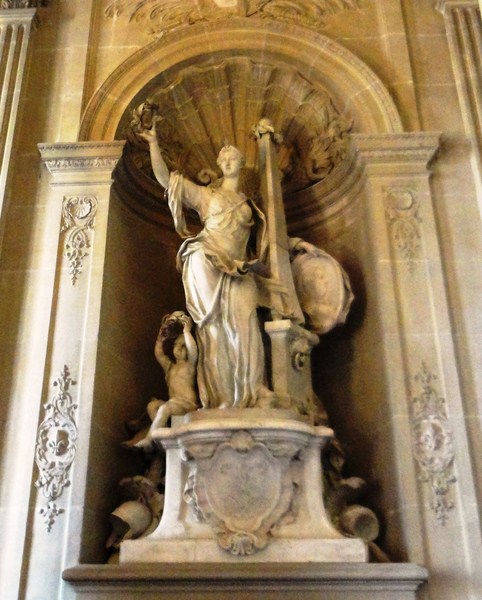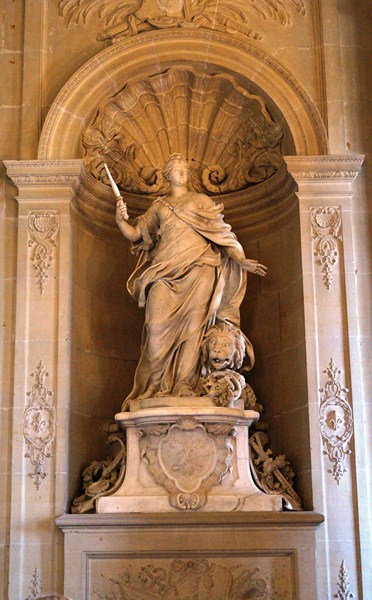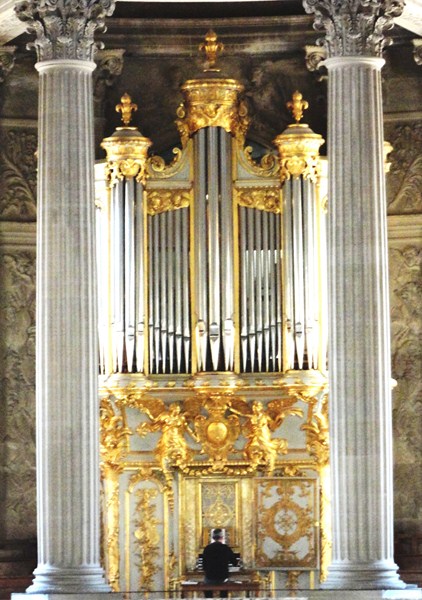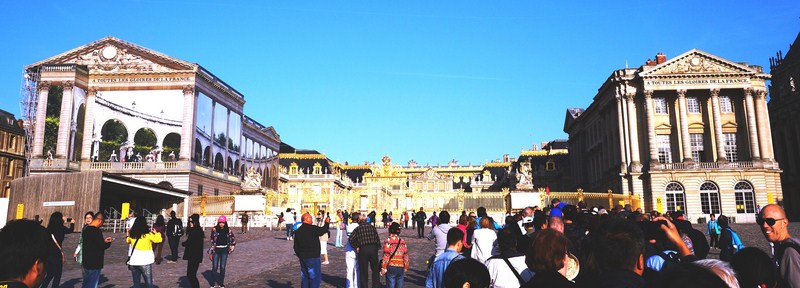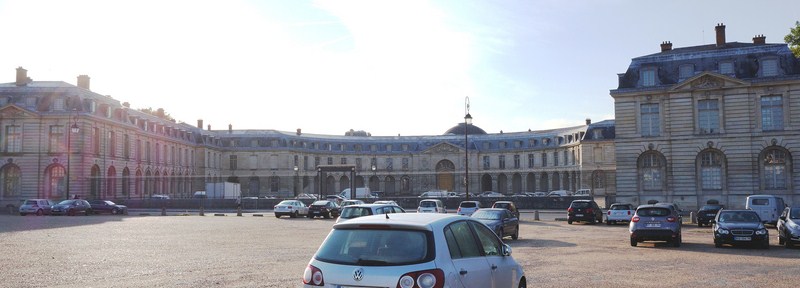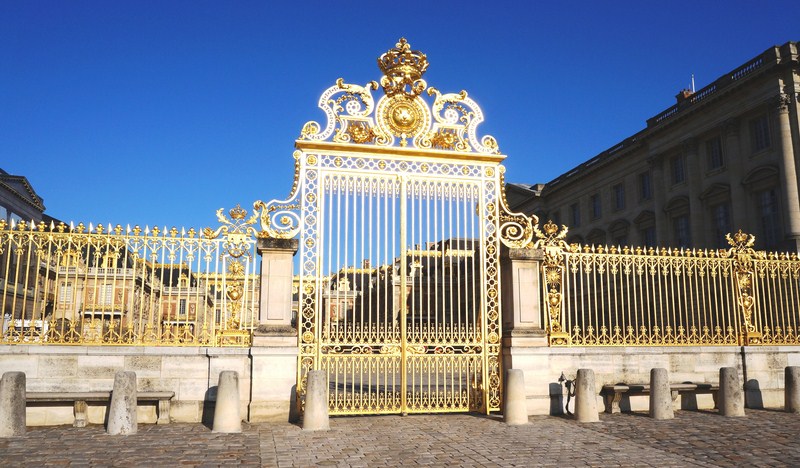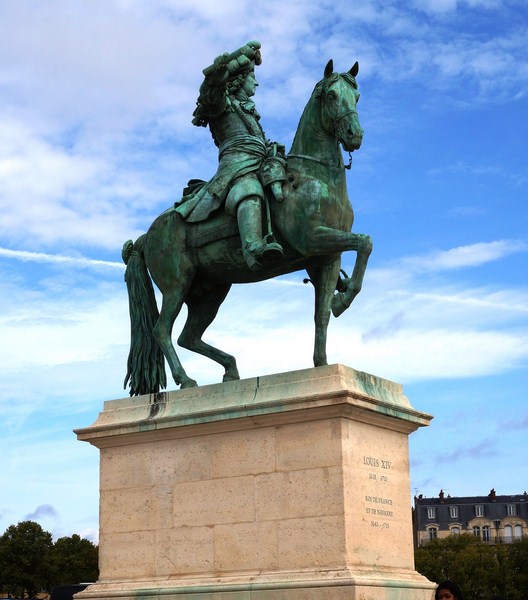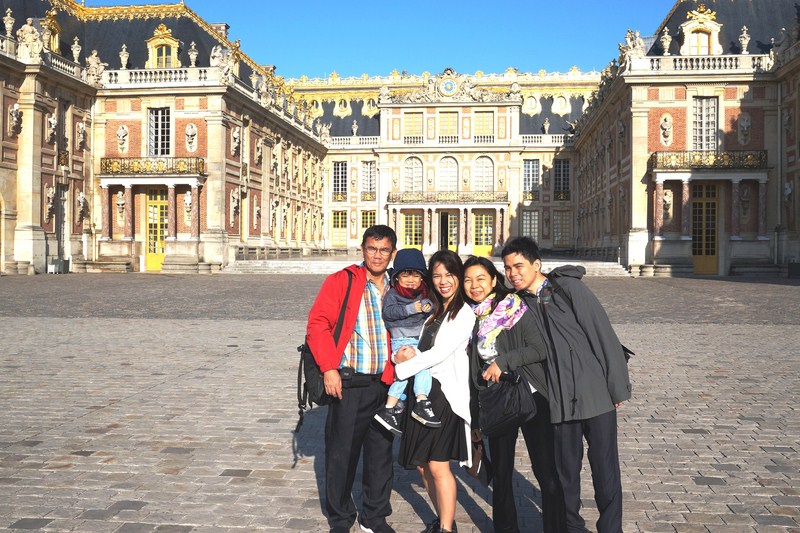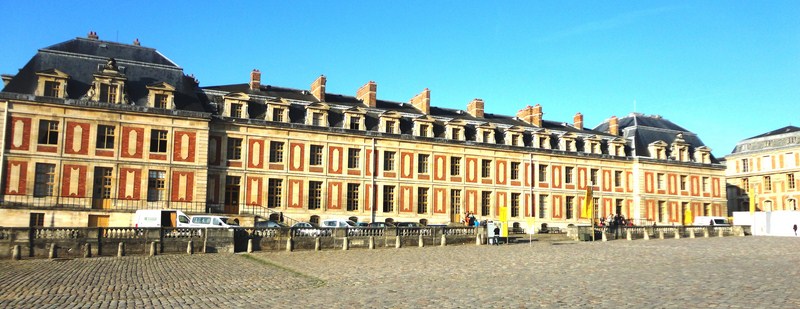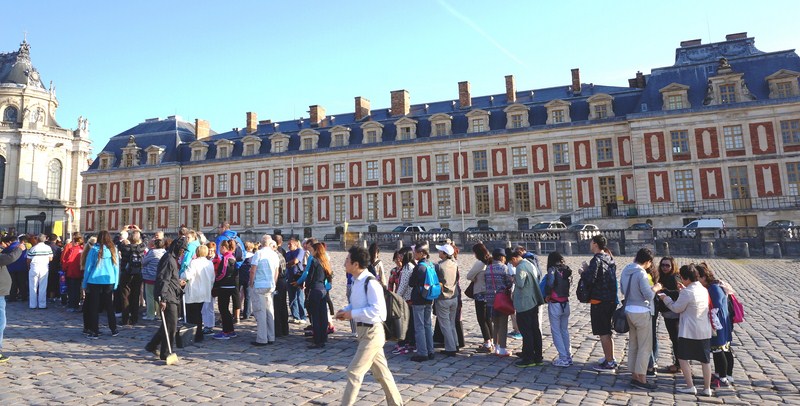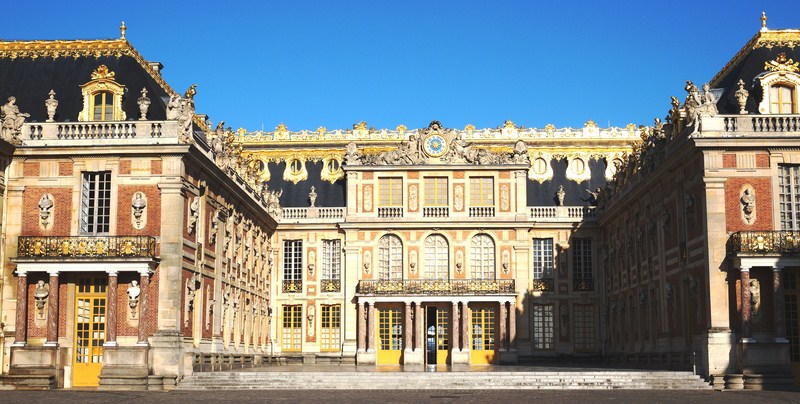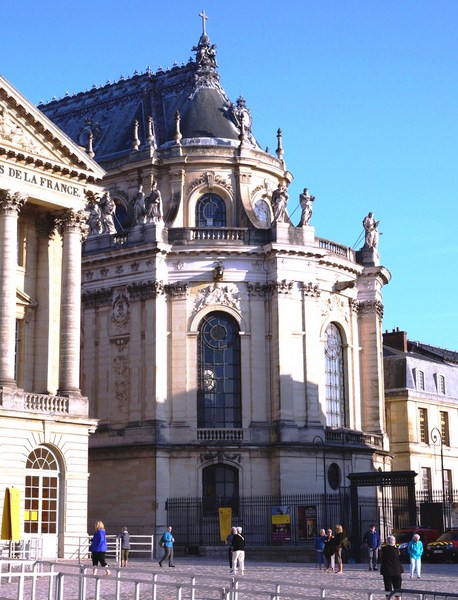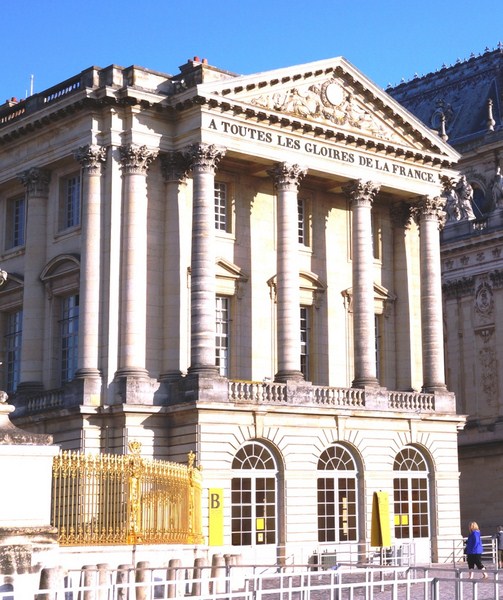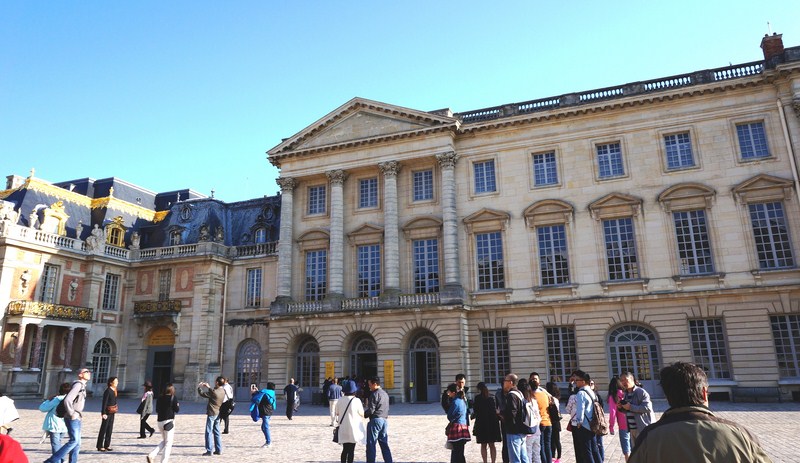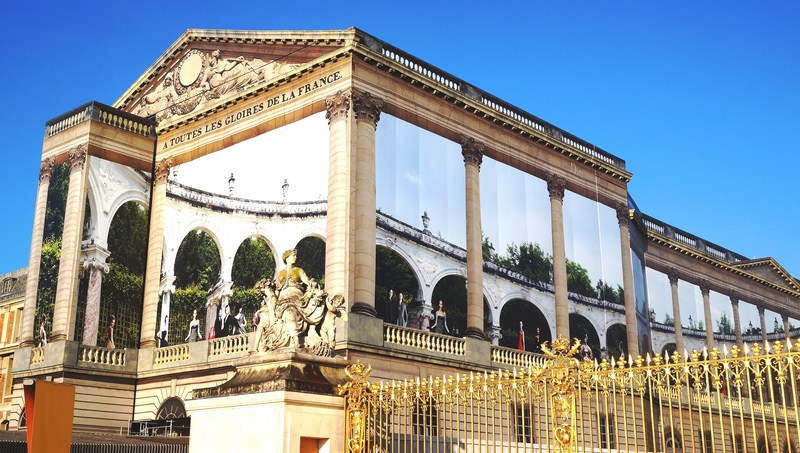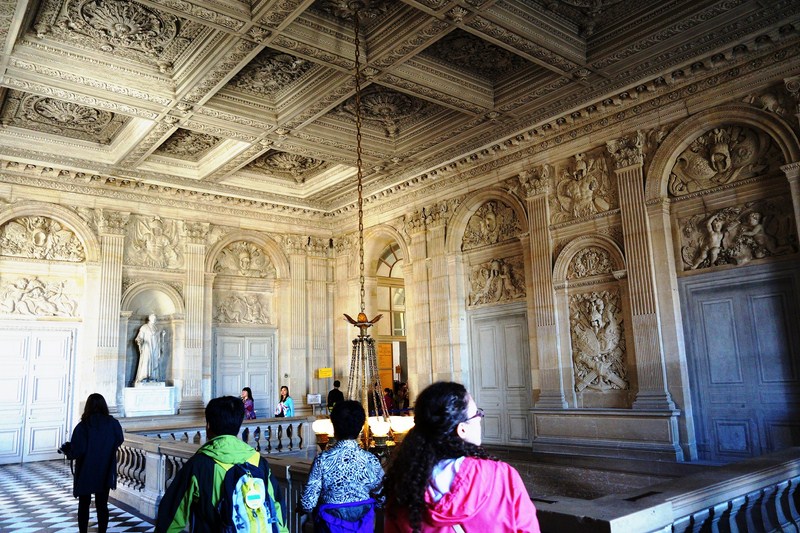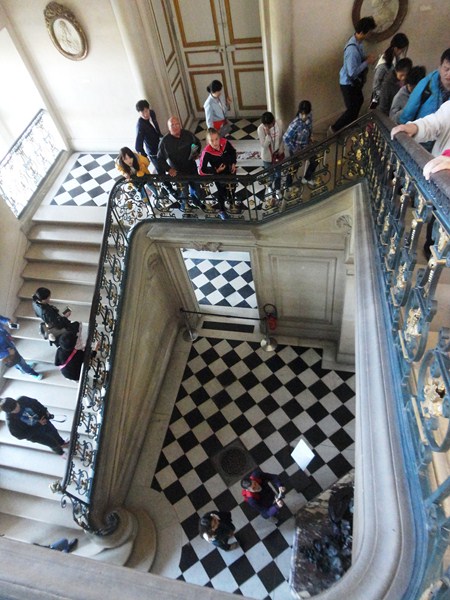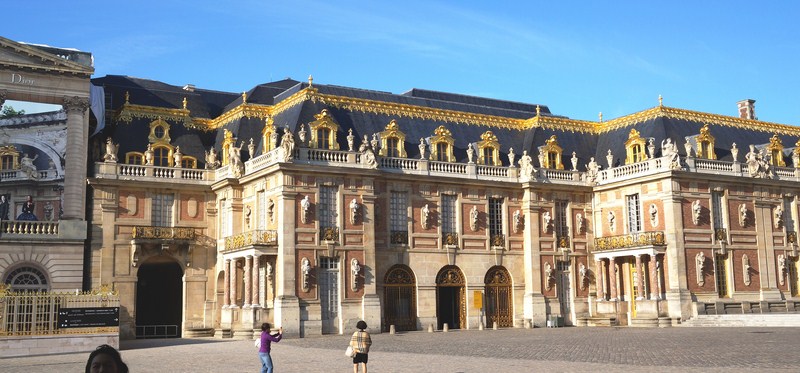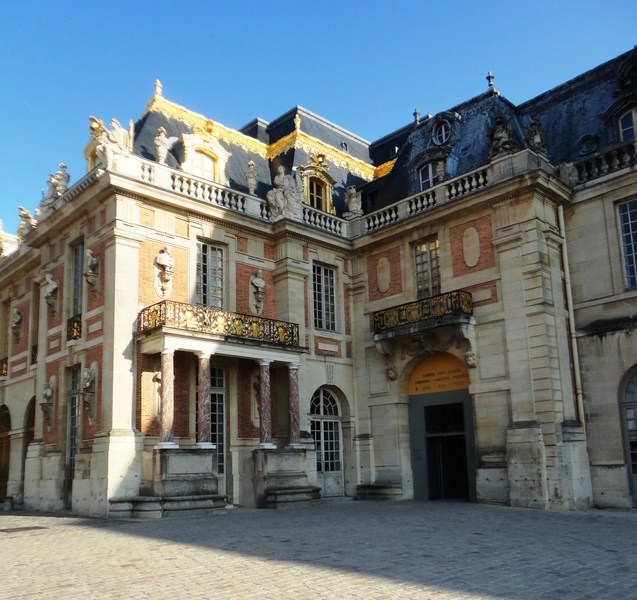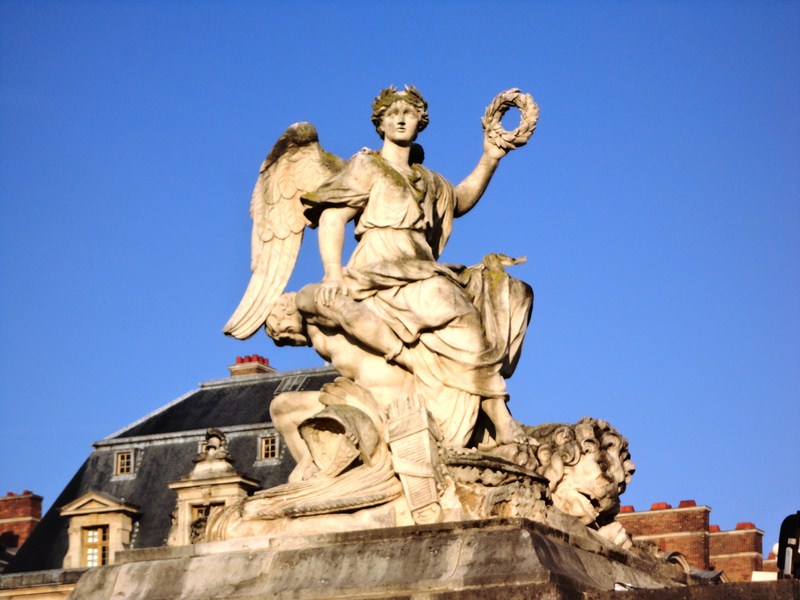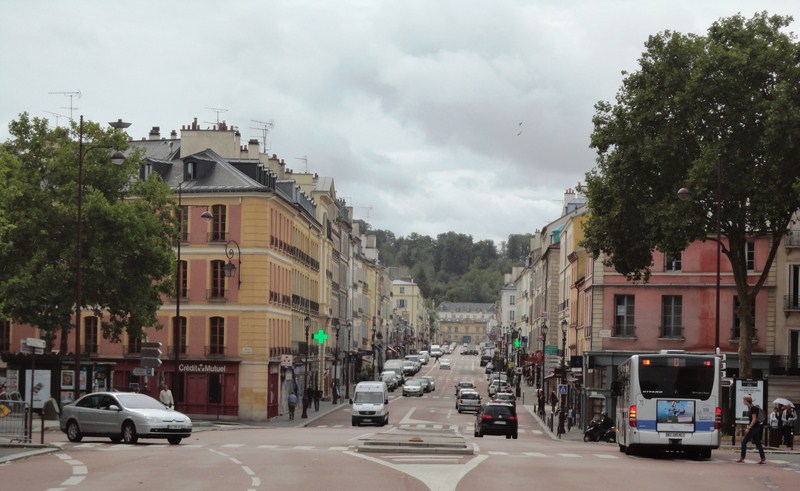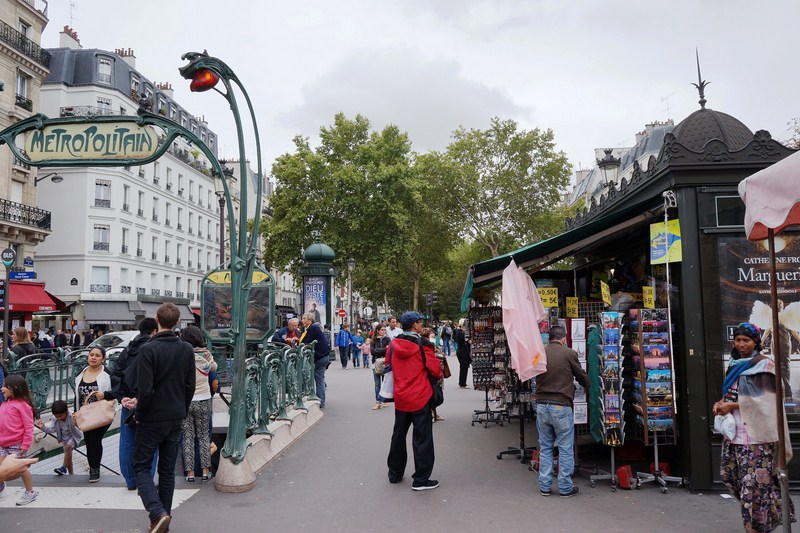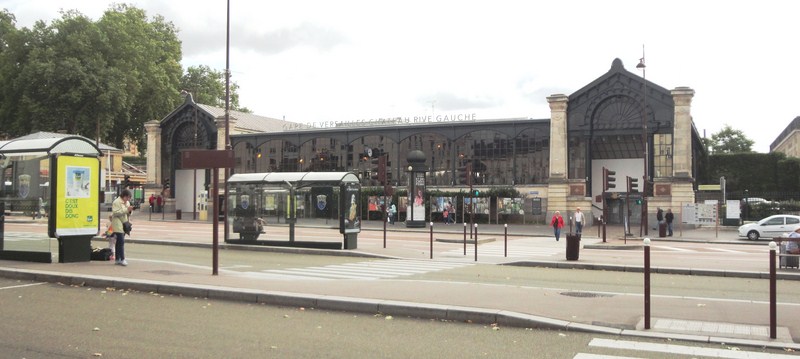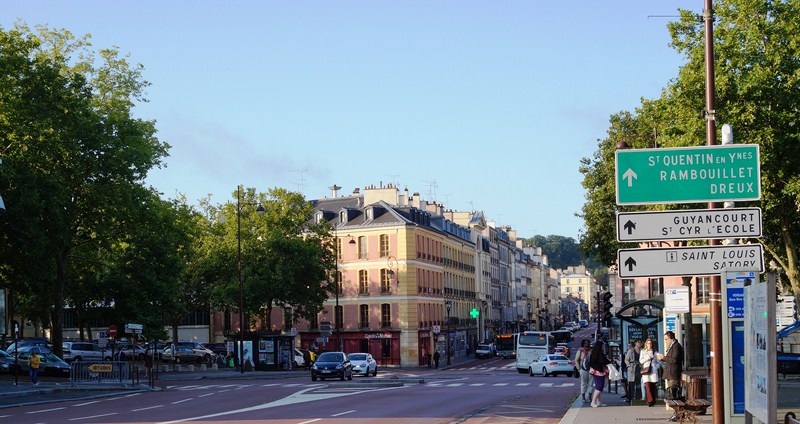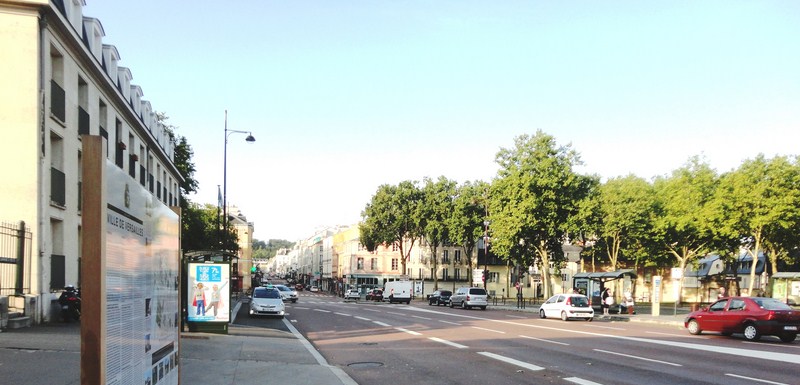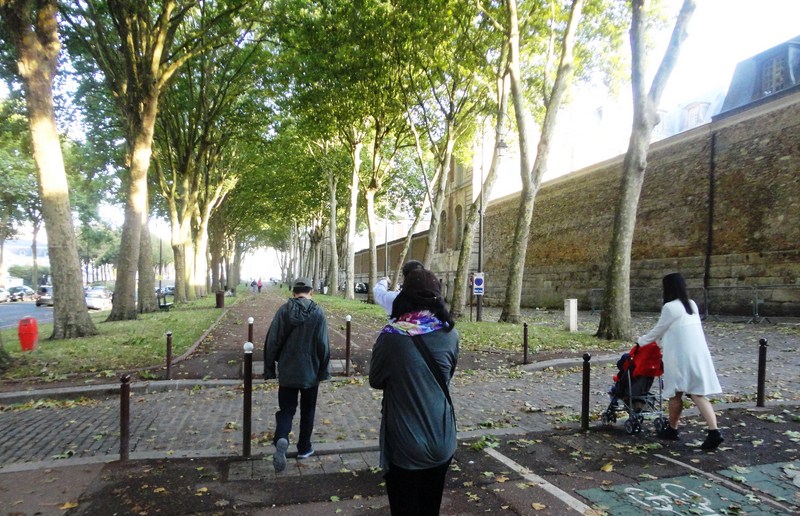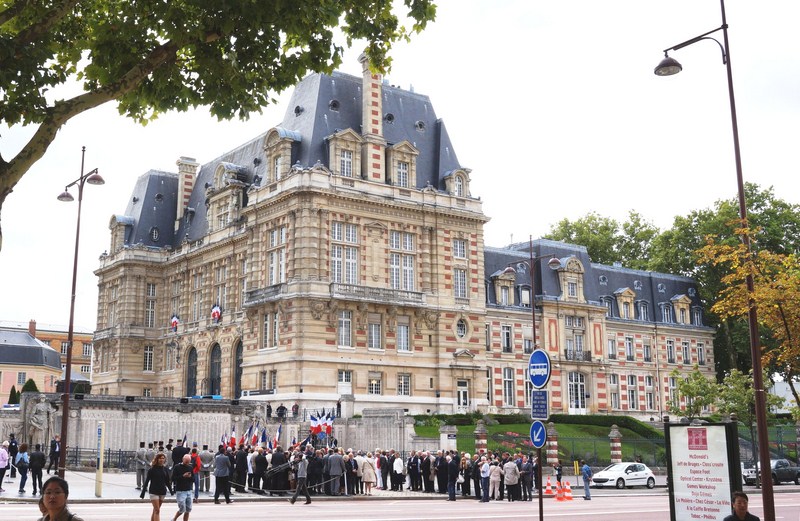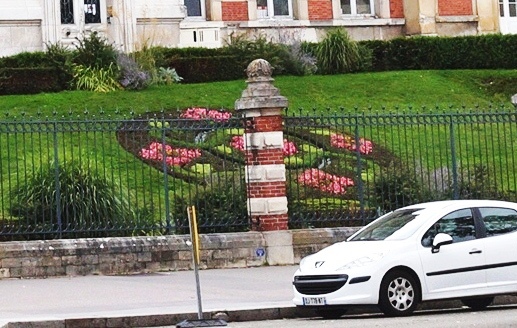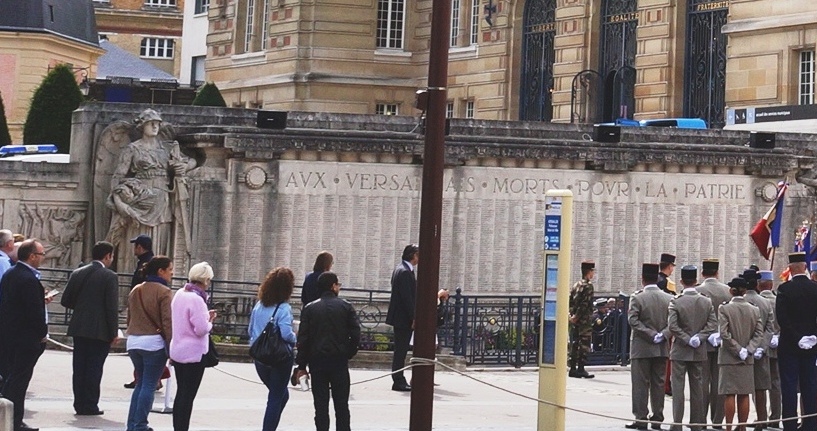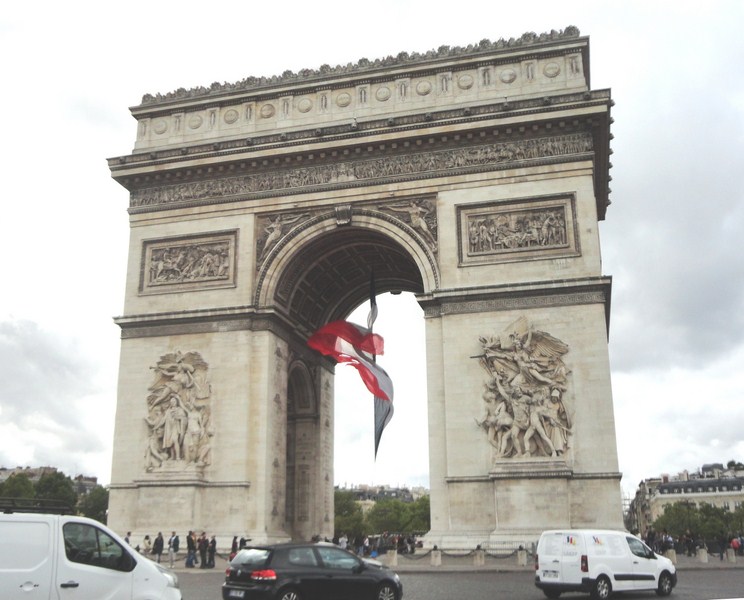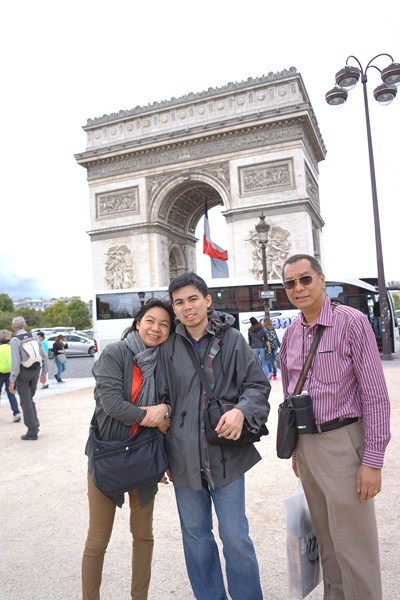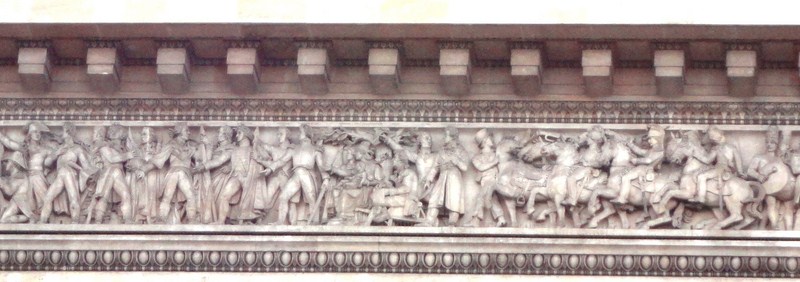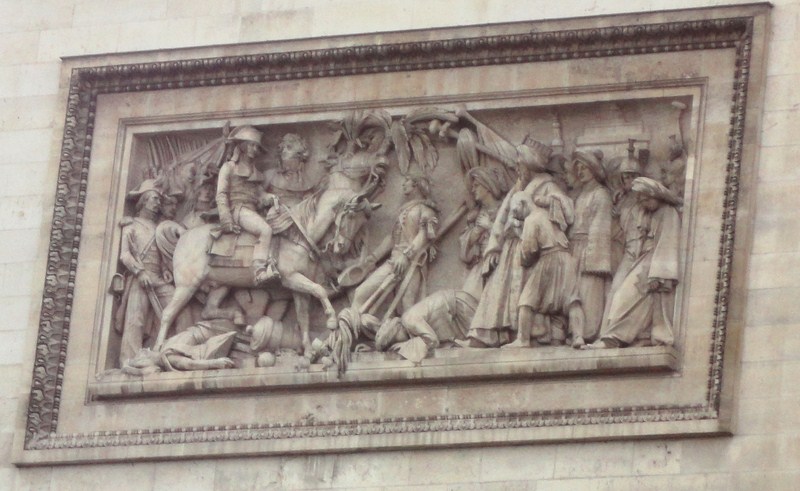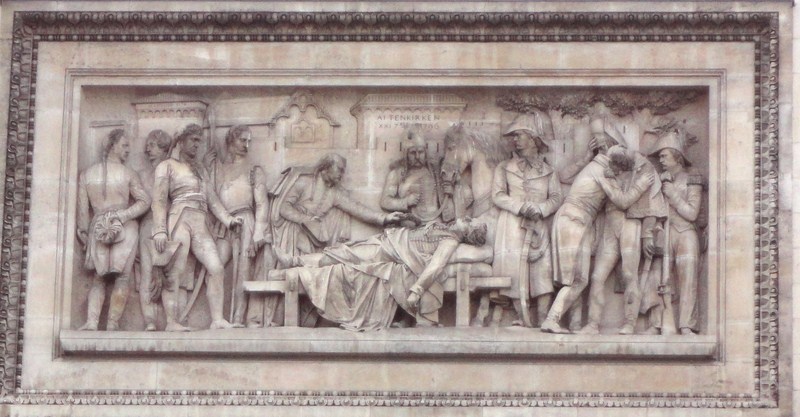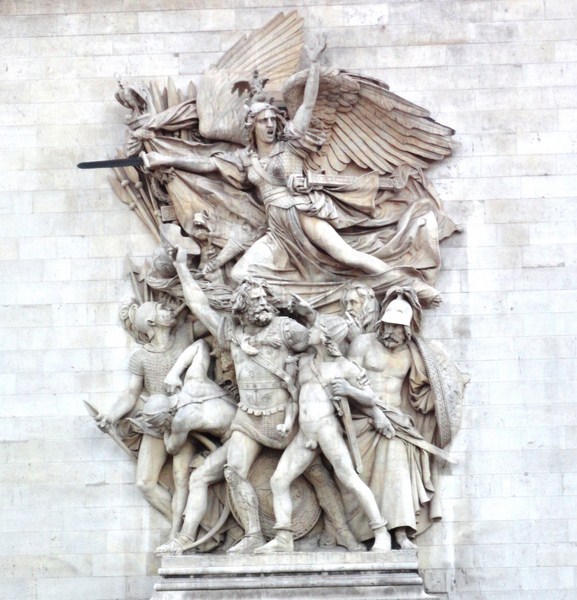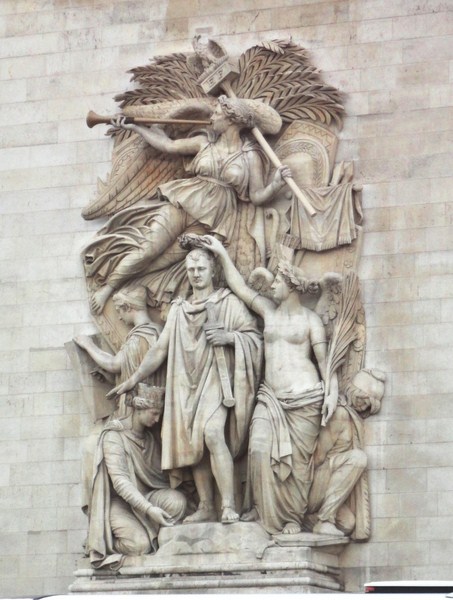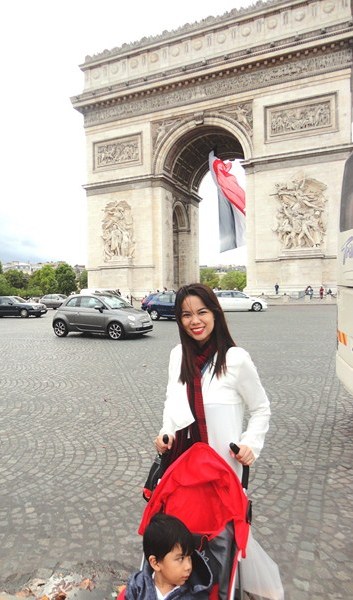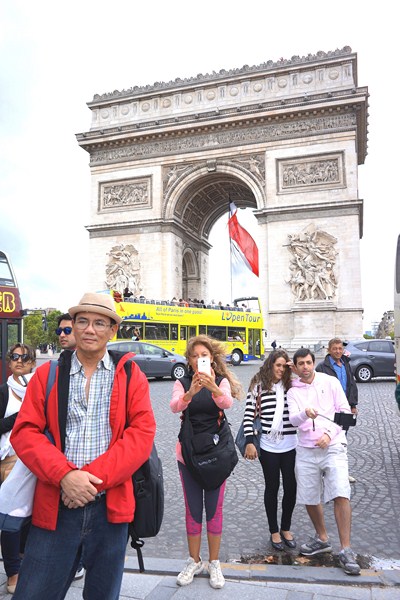The private apartments of the King (petit appartement du roi), the heart of the chateau; is a suite of rooms that were reserved for the private use of the king. It was accessed, from the Hall of Mirrors, from the Oeil de Boeuf antechamber past the Guardroom and the Antechamber of the Grand Couvert.
Check out “Versailles Palace,” “Versailles Palace – Hall of Mirrors” and “Versailles Palace – Queen’s Grand Apartment”
These rooms were set aside for the personal use of Louis XIV in 1683 while his successors, Louis XV and Louis XVI, who both drastically modified and remodeled these rooms for their personal use, used these rooms for official functions such as the ceremonial lever (“waking up”) and the coucher (“going to bed”) of the monarch, which were attended by a crowd of courtiers.
The King’s bedchamber, originally just a salon called the State Drawing Room, had been used by Queen Marie-Thérèse d’Autriche. After her death in 1701, Louis XIV, frustrated by the small size of his rooms (which could barely contain all the courtiers in attendance when he got up and when he went to bed), took it over for use as his own bedroom , knocking down the wall and combine the two rooms into one. Moving his bedchamber into its current location, the large room covered nearly 90 sq. m. and was situated in the center of the eastern façade of the Marble Courtyard.
Three tall doors, at the end of the room leading to the Hall of Mirrors, were sealed. Above these, Nicolas Coustou created the allegorical carved relief entitled France watching over the Sleeping King, which hangs over the bed. Decorations include several paintings set into the paneling (including a self-portrait of Antony Van Dyck).
As in all royal residences, the King’s Grand Apartment contained the customary succession of rooms (a Guard Room, two antechambers, a chamber and a cabinet) where access was subject to strict hierarchy and controlled by etiquette.
Beyond them was the King’s Chamber, the most important and symbolic room in the Royal Apartment. During the day, it was used during the king’s “getting up” and “going to bed” ceremonies, when he dined in private, and when he received certain courtiers or ambassadors. As a matter of principle, no one could enter his chamber unless invited. On September 1, 1715, after a reign of 72 years, the king died in this room.
On October 6, 1789, from the balcony of this room, Louis XVI and Marie-Antoinette, joined by the Marquis de Lafayette, looked down on the hostile crowd in the courtyard, shortly before the King was forced to return to Paris.
The King’s Guard Room, marking the entrance to the King’s Apartment, was where the king’s guards (changed over every 24 hours) were stationed to ensure the sovereign’s protection. During the day their camp beds were folded up and stowed away behind screens. In tribute to the room’s role, it’s deliberately understated, little sculpted decoration contains references to fighting. The Battle featuring the king’s guards (1684), a painting by Parrocel that hangs over the fireplace, honors the guards.
As we continued through the apartment, the decoration became more elaborate. The Antechamber of the Great Dining was where, every evening from 1690 (after the death of Marie-Thérèse d’Autriche and the Dauphine), Louis XIV used to dine in public on a table laid in front of the fireplace and sitting with his back to the hearth. The room is decorated with a series of 11 battle paintings by Joseph Parrocel, and a 12th depicting the Battle of Arbela, by Guillaume Courtois.
The Bull’s Eye Antechamber, the second antechamber in the royal apartment, was named after the circular window, on the southern side, which brings light into the room. This room, originally divided into two by a partition wall, was composed of the antechamber and the King’s Chamber, in which the bed was placed in the left-hand corner next to the current fireplace.
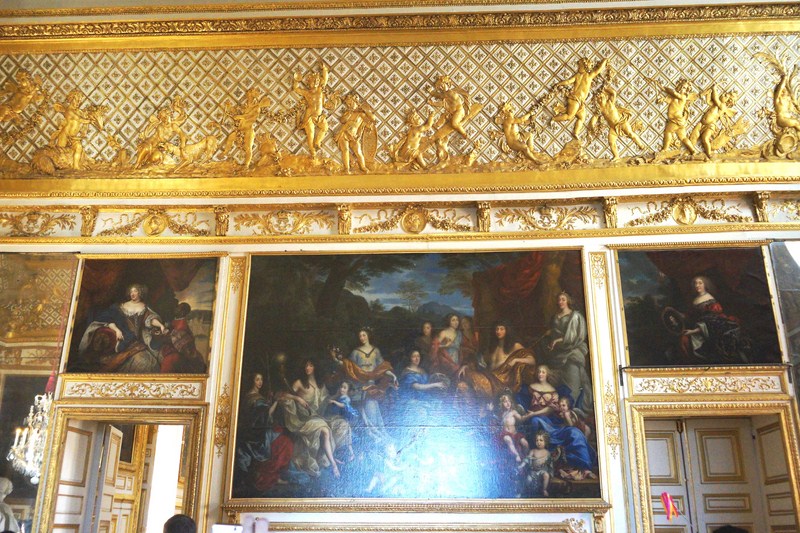
At the center is the painting of King Louis XIV and his Family (Jean Nocret, oil on canvas, 1670). Here they are portrayed as Roman gods.
Occupying a strategic position in the Royal Apartment, the Bull’s Eye Antechamber leads to the King’s Chamber to the north. To the west, the tall glass windows open directly onto the Hall of Mirrors, enabling courtiers to enter and leave the King’s Apartment. A door in the southern wall, to the right of the window, leads to the Queen’s Apartment while a staircase, in the eastern wall, leads to the Dauphin’s Apartment on the ground floor.
The decoration in this room, as in the preceding rooms, testifies to changes in the king’s personal taste. With the start of the new century, Louis XIV abandoned rich marble decoration and painted ceilings, replacing them with white ceilings and gilded woodwork. Along the cornice runs a frieze depicting children’s games.
The very fine brocade décor, of gold and silver on a crimson background, is complemented by the paintings, all chosen by Louis XIV himself. Four paintings depict the authors of the gospels. Other paintings include The Tribute to Caesar, by Valentin de Boulogne; Hagar in the Wilderness by Giovanni Lanfranco; Saint John the Baptist (above the door) by Giovanni Battista Caracciolo; Mary Madeleine by Domenico Zampieri; and two portraits in the style of Van Dyck. Above the fireplaces are a bust of Louis XIV (by Antoine Coysevox), a clock-barometer and four candelabras which belonged to the Count of Provence (Louis XVI’s brother).
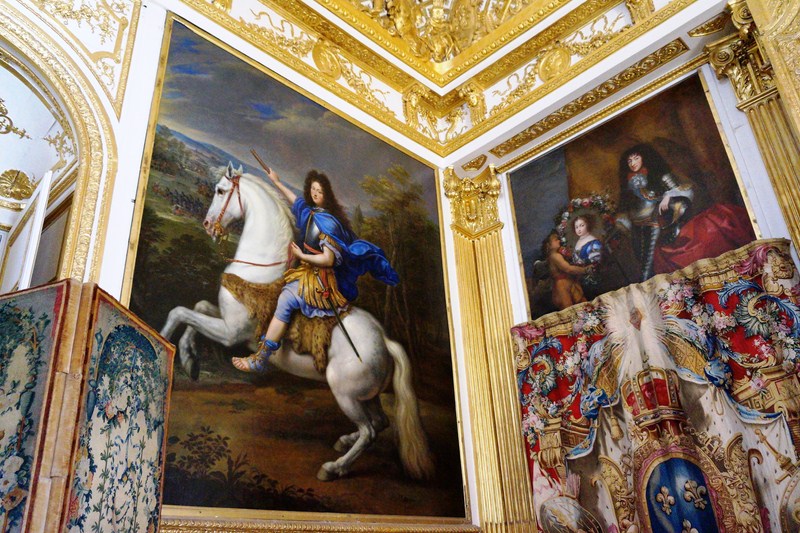
At left is the Equestrian painting of Philippe of France, Duke of Orléans (only brother of Louis XIV) by Pierre Mignard. Oil on canvas, 300 cm. (118.1 in.) by 261 cm. (102.7 in.)
The Council Room, adjacent to the King’s Chamber, opens onto the Hall of Mirrors. It took on its current in 1755, during the reign of Louis XV, when the King’s Cabinet (where Louis XIV held his council meetings) and the Cabinet des Termes (a more private space, where the king spent time with his family or certain guests after dinner) were combined.
The chamber is decorated with fine woodwork, based on drawings by Ange-Jacques Gabriel, and crafted by Antoine Rousseau. The elaborate motifs illustrate subjects, such as war and justice, addressed by the king during council meetings.
The decor also includes a Rococo-style clock (1754), a porphyry bust of Alexander the Great, and two vases of Mars and Minerva in Sevres porcelain and chased bronze by Pierre-Philippe Thomire (1787). The room, also used for official presentations (which were a necessary rite for admission to the Court), was where, on April 22, 1769, Madame Du Barry, among others, was presented to the King.
King’s Grand Apartment: First Floor, Chateau De Versailles, Place d’Armes, 78000 Versailles, France. Tel: +33 1 30 83 78 00. Website: www.chateauversailles.fr. Open daily (except on Mondays and May 1), from 9:00 AM to 6:30 PM. Last admission is 6 PM while the ticket office closes at 5.45 PM. The estate of Trianon and the Coach Gallery only open in the afternoon while the Park (7 AM to 8:30 PM) and Gardens (8 AM to 8.30 PM, last admission: 7 PM) are open every day. Access to the Gardens is free except on days of fountains shows. You can access the estate of Trianon through the Gardens or through the city. The Petit Trianon is only possible via the Grand Trianon.
Admission: 27 € for Passport with Timed Entry (days with Musical Fountains Shows or Musical Gardens), 20 € for Passport with Timed Entry (without musical fountains show or musical gardens), 12 € for Estate of Trianon ticket(without Musical Fountains Show or Musical Gardens), 10 € for Passport with Timed Entry (free admission, days with Musical Fountains Show or Musical Gardens), 9,50 € for Musical Fountains Show ticket, 8,50 € for Musical Gardens ticket, 28 € for the Fountains Night Show.
How to Get There: The cheapest option for reaching Versailles is by train. There are three train stations in Versailles. RER line C arrives at Versailles Château – Rive Gauche train station, the closest one of the Palace (just 10 minutes’ walk to the Palace). SNCF trains from Gare Montparnasse arrive at Versailles Chantiers train station, which is 18 minutes on foot to the Palace. SNCF trains from Gare Saint Lazare arrive at Versailles Rive Droite train station, 17 minutes on foot to the Palace. RER C and SNCF train times are available on www.transilien.com.

